Morocco is home to an incredible variety of birds, with over 350 species living in this North African country. From the majestic flamingoes of the Atlantic coast to the tiny finches of the Atlas Mountains, Morocco is a birdwatcher’s paradise.
Its wetlands, forests, deserts, and mountain ranges provide a variety of habitats for a wide range of birds, from the common to the rare. In this article, we’ll explore some of the most fascinating and unique birds of Morocco.
1. White-Crowned Wheatear
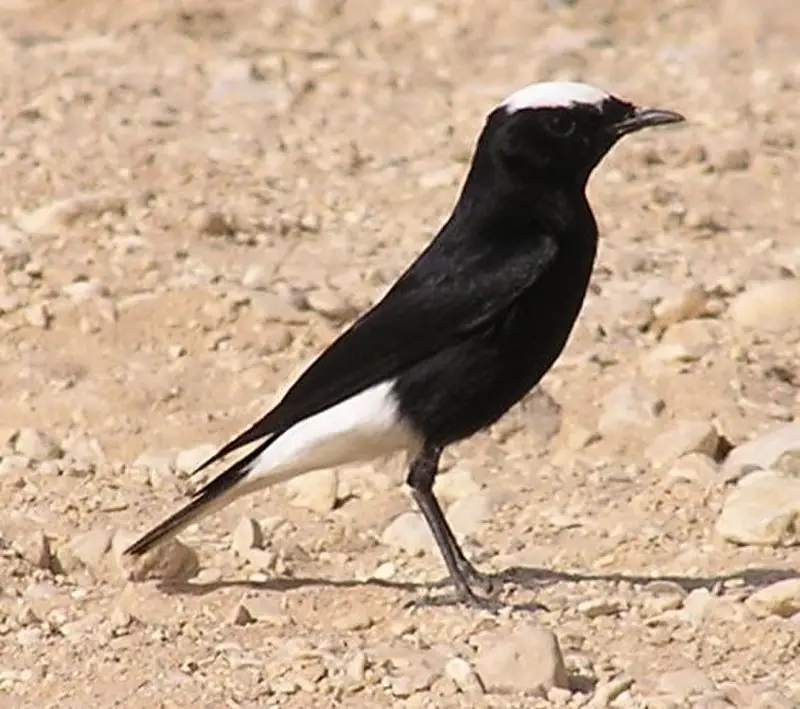
The White-crowned Wheatear is a small passerine bird, formerly classed as part of the thrush family Turdidae but now considered an Old World Flycatcher.
It stands at 17-18 cm in length and can be found across deserts from the Sahara and Arabia to Iraq. This species tends to remain resident all year round however there are some seasonal movements for certain individuals.
Its diet consists mainly of insects which it feeds on by hopping around rocks searching for prey or perching nearby waiting for them to pass by before pouncing on them with its sharp talons.
The male has striking black wings and back contrasted against his white forehead and throat while females often have brownish grey upperparts instead of jet black feathers making identification easier within this species pairings.
Scientific classification:
| Kingdom | Animalia |
| Phylum | Chordata |
| Class | Aves |
| Order | Passeriformes |
| Family | Muscicapidae |
| Genus | Oenanthe |
| Species | O. leucopyga |
2. Moussier’s Redstart
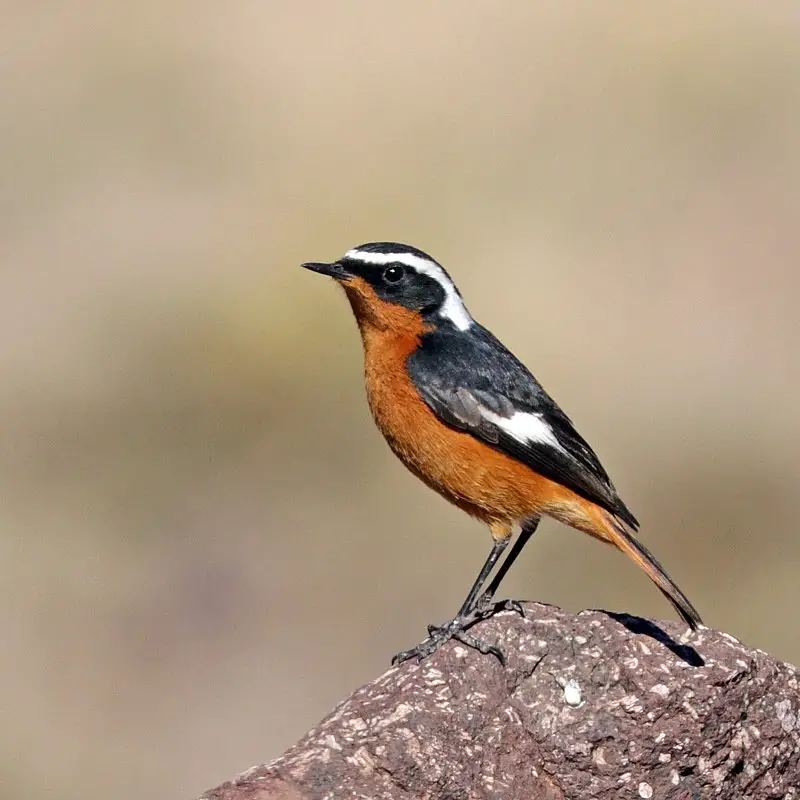
Moussier’s redstart is a small passerine bird found in the Atlas Mountains of northwest Africa. It has an endemic residence there, living and breeding in open woodland with rocky areas from sea level up to 3000m altitude.
This species was once classified as part of the thrush family but now belongs to Old World flycatchers (Muscicapidae).
They have a striking plumage – males are black on top with white bellies, while females are orange-brown above and paler below.
The head and tail both feature distinctive red patches for which it gets its name.
These birds feed mainly on insects but will also take berries when available. In winter they sometimes descend into lower altitudes or migrate further southwards if food supply is low.
Scientific classification:
| Kingdom | Animalia |
| Phylum | Chordata |
| Class | Aves |
| Order | Passeriformes |
| Family | Muscicapidae |
| Genus | Phoenicurus |
| Species | P. moussieri |
Also Featured In: Common Algerian Birds , Birds Live in Tunisia
3. Stork
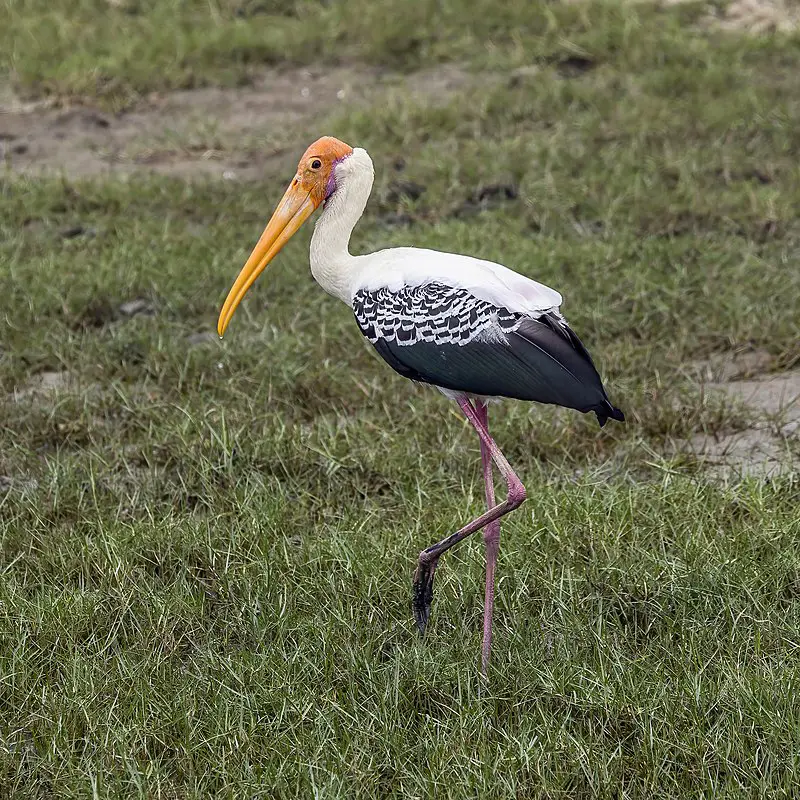
Storks are majestic birds, easily recognizable with their long necks and legs. They belong to the family Ciconiidae, making up the order Ciconiiformes.
Storks inhabit many areas around the world but generally prefer drier habitats than other wading birds like herons or ibises which have been moved to separate orders.
Despite being large in size they can be quite graceful in flight as well as when hunting for food such as insects, small mammals and reptiles near shallow waters.
During nesting season stork pairs build nests on high trees or platforms made of sticks and twigs where they lay eggs that hatch after about a month of incubation time by both parents taking turns sitting on them warmly until hatching day.
Scientific classification:
| Kingdom | Animalia |
| Phylum | Chordata |
| Class | Aves |
| Clade | Aequornithes |
| Order | Ciconiiformes Bonaparte, 1854[1] |
| Family | Ciconiidae J. E. Gray, 1840[1] |
4. Eurasian Reed Warbler
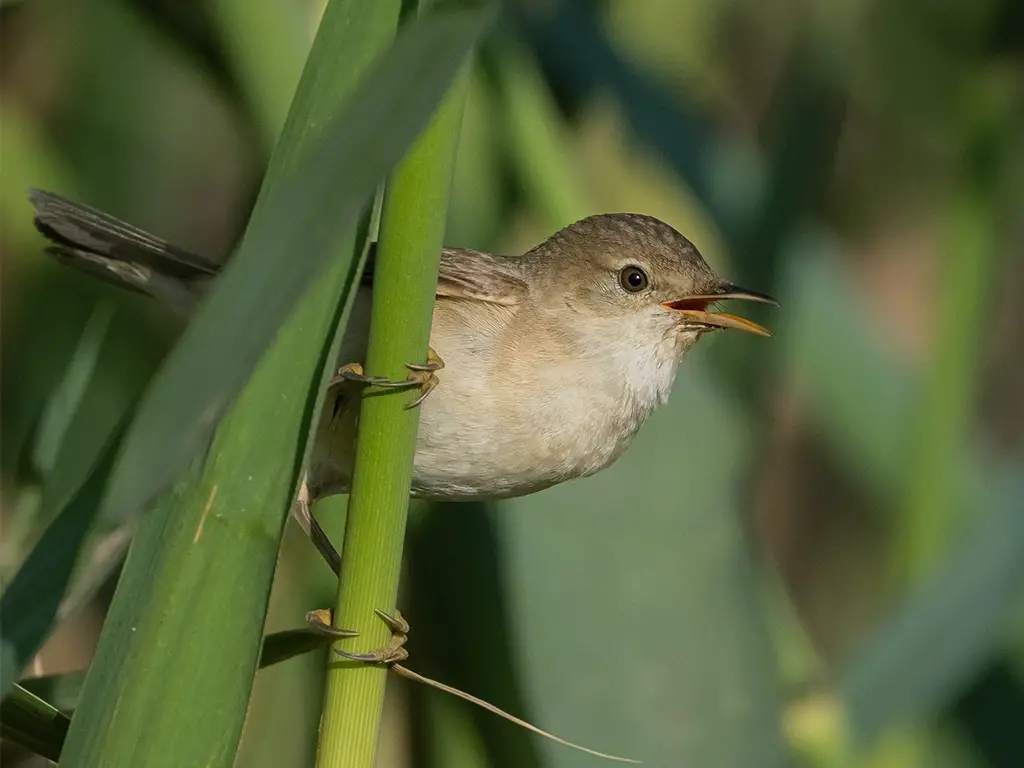
The Eurasian reed warbler (Acrocephalus scirpaceus) is a species of Old World Warbler native to the temperate parts of Europe and Asia.
It breeds in wetlands such as marshes, ponds and rivers with dense vegetation like reeds or tall grasses.
During its wintering season, it migrates southward to sub-Saharan Africa where there are milder conditions.
This small bird has streaked brown plumage on the upperparts and white underparts which makes it difficult for predators to spot among the foliage.
Its diet consists mainly of insects including aphids, caterpillars larvae and moths caught while flying over water or by gleaning from plants growing near water bodies.
The male sings an attractive song consisting of several phrases repeated one after another as part of their courtship display during breeding season in order attract females for mating purposes.
Scientific classification:
| Kingdom | Animalia |
| Phylum | Chordata |
| Class | Aves |
| Order | Passeriformes |
| Family | Acrocephalidae |
| Genus | Acrocephalus |
| Species | A. scirpaceus |
5. Marbled Duck
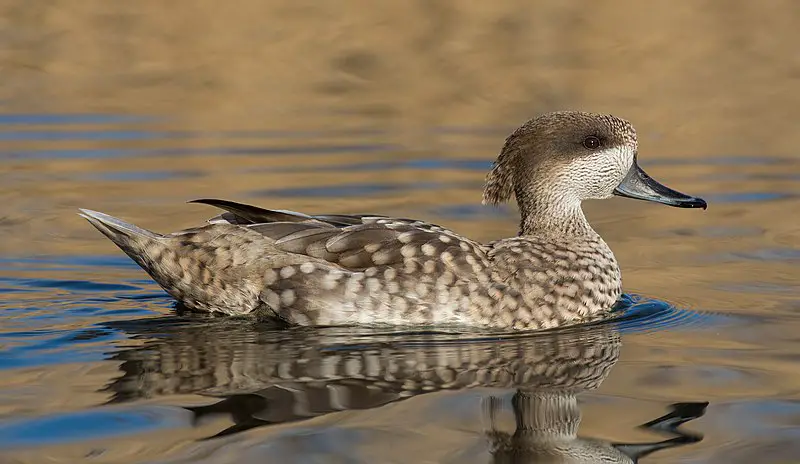
The Marbled duck is a medium-sized species of waterfowl native to southern Europe, northern Africa, and western and central Asia.
It gets its name from the marbling pattern on its feathers which give it an eye-catching mottled appearance.
The scientific name comes from Greek and Latin words meaning “marble”, “duck”, “narrow or small” and ‘billed’ respectively.
In the past these ducks bred in large numbers throughout the Mediterranean region but their population has declined due to human activities such as hunting for sport as well as habitat destruction.
Conservation efforts are underway in order to protect this beautiful bird so that future generations can still enjoy seeing them around.
Scientific classification:
| Kingdom | Animalia |
| Phylum | Chordata |
| Class | Aves |
| Order | Anseriformes |
| Family | Anatidae |
| Genus | Marmaronetta Reichenbach, 1853 |
| Species | M. angustirostris |
Also Featured In: Common Uzbekistan Birds, Most Common Spain Birds
6. Desert Sparrow
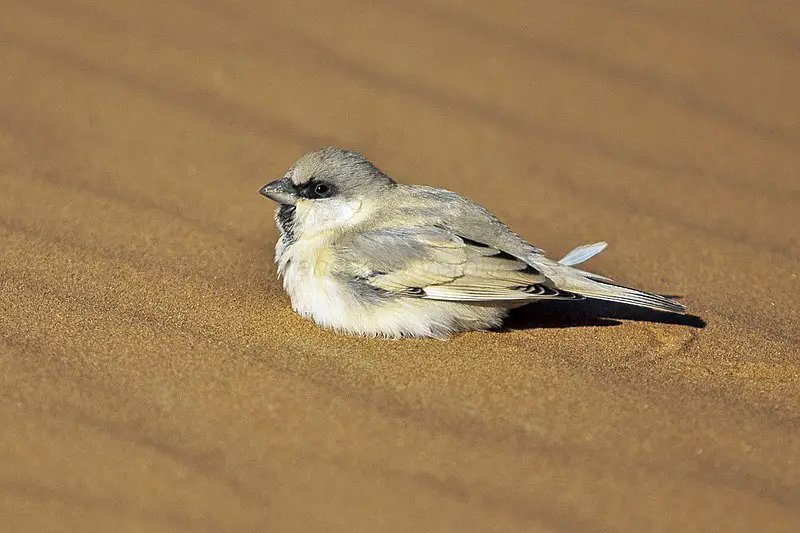
The Desert Sparrow is a small bird found in the Sahara desert of northern Africa. It belongs to the sparrow family Passeridae and has similar characteristics with Zarudny’s Sparrow, which inhabits Central Asia.
Historically, it was considered as a subspecies but later recognized as separate species by BirdLife International.
This tiny bird has grayish-brown upper parts with black streaks on its crown and center back while its underparts are whitish or yellowish buff coloration.
Its short bill is pale blue-gray above and pink below, surrounded by white feathers around eyes that gives them an attractive look.
Although not much known about their behavior yet they can be heard singing during breeding season when males sing loudly for females’ attraction.
Scientific classification:
| Kingdom | Animalia |
| Phylum | Chordata |
| Class | Aves |
| Order | Passeriformes |
| Family | Passeridae |
| Genus | Passer |
| Species | P. simplex |
7. Streaked Scrub Warbler
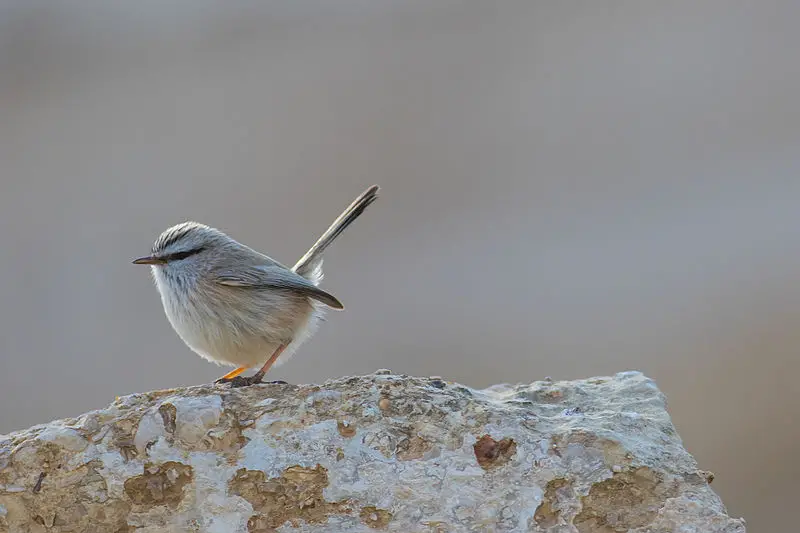
The Streaked Scrub Warbler is a small passerine bird, found in northern Africa and southwestern Asia.
It frequents scrubby areas, ravines and gorges near deserts, remaining mainly resident but with possible local movements outside the breeding season.
This species has grayish-brown upperparts streaked with black lines or bars forming an intricate pattern across its back; whitish underparts are also marked by dark streaks on the breast.
Its diet consists of insects which it catches from low vegetation while making short flights over them to capture prey as well as gleaned items from branches or foliage surface foraged on foot.
The Streak Scrub Warbler is quite vocal throughout the year giving various trills and whistles that sound like “seet”.
Scientific classification:
| Kingdom | Animalia |
| Phylum | Chordata |
| Class | Aves |
| Order | Passeriformes |
| Family | Scotocercidae Fregin, Haase, Olsson, & Alström, 2012 |
| Genus | Scotocerca Sundevall, 1872 |
| Species | S. inquieta |
8. Eurasian Penduline Tit
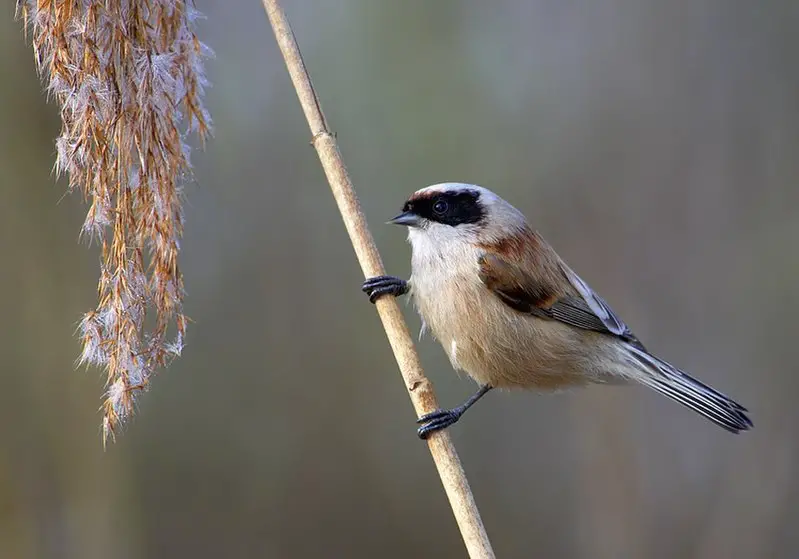
The Eurasian penduline tit is a passerine bird of the genus Remiz which can be found widely across the western Palearctic.
It migrates to more northern parts in summer, while staying resident in its southern range during winter months.
This species experienced an expansion of its breeding grounds throughout Western Europe between 1980s and 1990s, thus increasing its population significantly.
The Penduline Tit has various striking features like bright yellow underparts with black streaks on sides.
Greyish-brown upper part with white underside and pale eye line along head sides as well as distinctive tail nest made from fibers and mosses hanging from trees or shrubs like a pendulum hence their name ‘Penduline’.
These birds feed mainly on insects but also eat some seeds especially sunflower seeds making them popular garden visitors for many people.
Scientific classification:
| Kingdom | Animalia |
| Phylum | Chordata |
| Class | Aves |
| Order | Passeriformes |
| Family | Remizidae |
| Genus | Remiz |
| Species | R. pendulinus |
Also Featured In: Italian Birds You Should Know, Ukrainian Birds You Should Know
9. Bustard
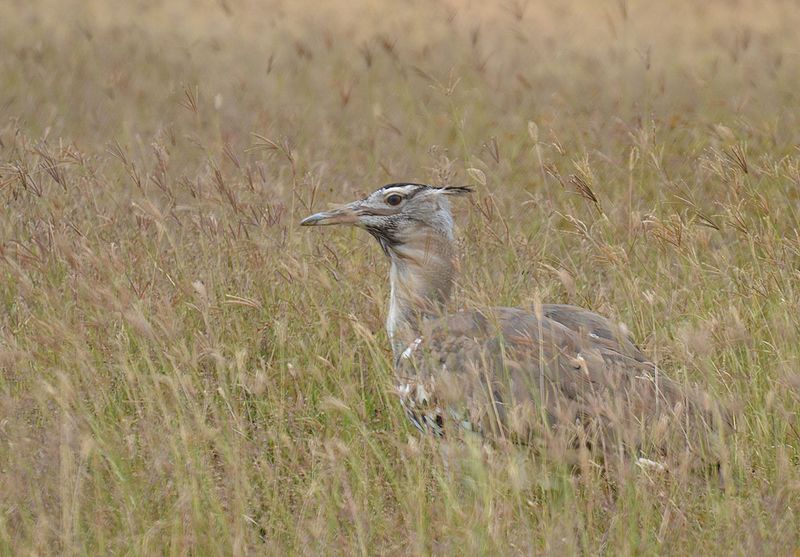
Bustards are large, terrestrial birds that inhabit dry grassland areas and the steppes of the Old World. They range from 40-150 cm in length and belong to the family Otididae.
Bustards have an omnivorous diet consisting of leaves, buds, seeds, fruit as well as small vertebrates and invertebrates.
These birds usually live a solitary life but can be seen gathering around water sources or food during certain times of year such as mating season.
Due to their large size they are vulnerable to predation by foxes or other animals which is why they tend to remain alert at all times.
When in open spaces while relying on camouflage for protection against predators when out in tall vegetation coverings.
Scientific classification:
| Kingdom | Animalia |
| Phylum | Chordata |
| Class | Aves |
| Clade | Otidimorphae |
| Order | Otidiformes Wagler, 1830 |
| Family | Otididae Rafinesque, 1815 |
10. Bee-Eater

Bee-eaters are one of the most beautiful and vibrant birds in existence. They have a slender body, long wings, down turned bills and their signature elongated central tail feathers which make them instantly recognizable from afar.
Their plumage is incredibly colorful with many shades ranging from blues to greens to reds that glisten when they fly through the air.
These stunning creatures can be found all over Africa, Asia, Southern Europe, Australia and New Guinea where they feed mainly on bees but also other insects like flies or wasps as well as small mammals such as lizards or rodents.
Bee-eaters live in colonies near rivers or wetlands so that they may easily hunt for food while staying close together for safety purposes.
Additionally it allows them to better display their impressive courtship dances during mating season.
Scientific classification:
| Kingdom | Animalia |
| Phylum | Chordata |
| Class | Aves |
| Order | Coraciiformes |
| Family | Meropidae Rafinesque, 1815 |
11. Skuas
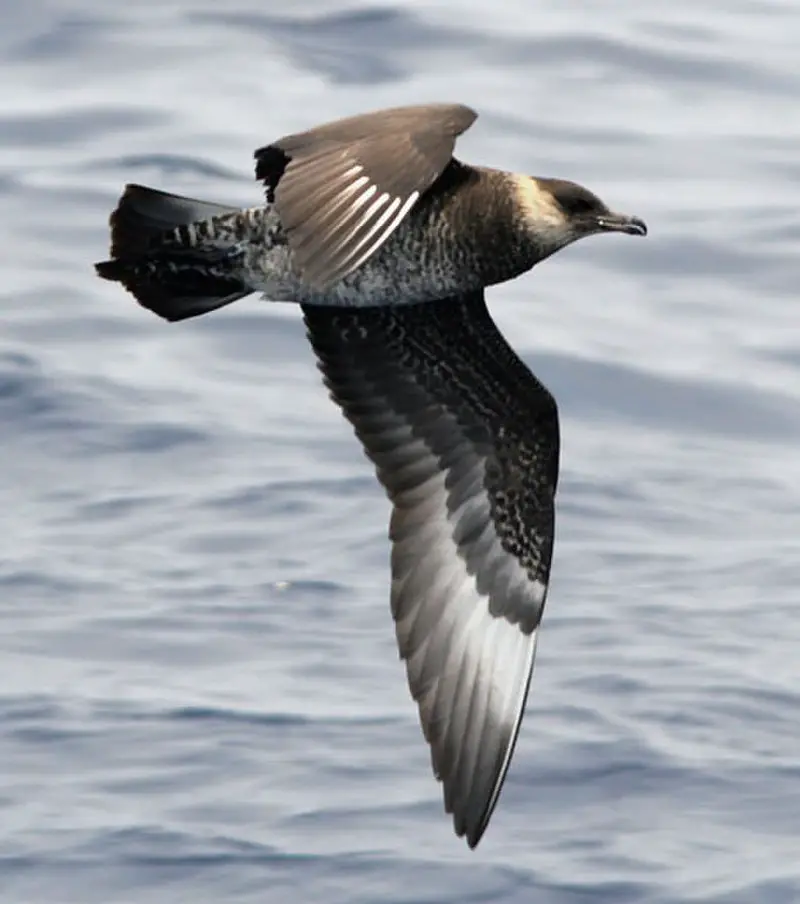
Skuas are a group of predatory seabirds with seven species, all belonging to the genus Stercorarius.
They are also known as “Jaegers” in North America and their name originates from the Faroese word for Great Skua – skúgvur.
These birds typically inhabit coastal areas or open oceans where they feed on fish, krill and other marine creatures.
Skuas can be distinguished by their pointed wings which help them fly long distances while hunting food.
Their distinctive colouration varies depending on age and habitat but generally includes greyish brown upperparts and white underparts with black streaks along its belly area.
The overall size ranges from 24-40 cm making these one of the larger sea bird species.
Scientific classification:
| Kingdom | Animalia |
| Phylum | Chordata |
| Class | Aves |
| Order | Charadriiformes |
| Suborder | Lari |
| Family | Stercorariidae Gray, 1871 |
| Genus | Stercorarius Brisson, 1760 |
Also Featured In: Birds You’ll Find in the Sea, Turkey Birds You Should Know
12. Sandgrouse
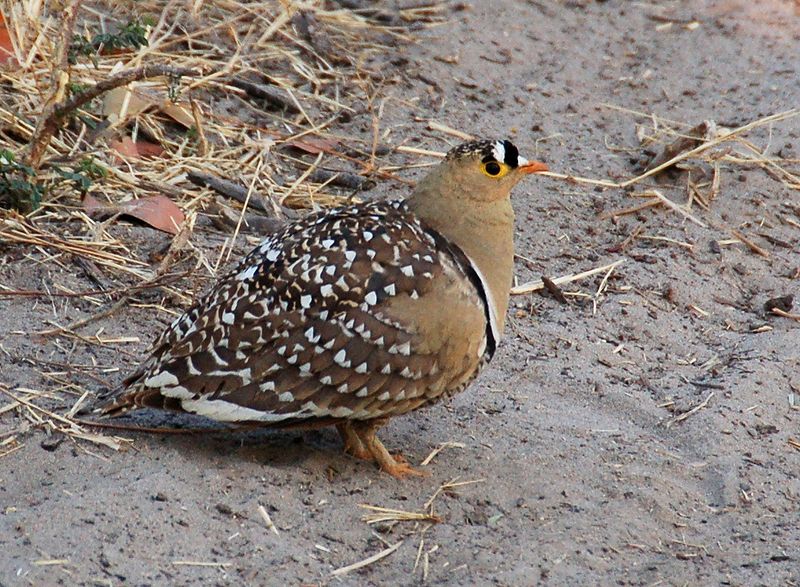
Sandgrouse is birds of the order Pterocliformes, found mainly in Africa and Asia. There are sixteen species belonging to two genera – Syrrhaptes from central Asia and Pterocles from Africa and other Asian countries.
They inhabit treeless areas such as deserts, steppes, scrubland, or savannas and tend to be ground-dwelling birds that feed on seeds.
Sandgrouse has adapted special features for survival in their harsh environment.
They possess well-developed feet with four toes used for walking over hot sand while keeping their body temperature cool at all times by regulating heat loss through their legs.
Their feathers also act like a sponge helping them absorb water before flying long distances back home where they then expel it using specialized glandular secretions located near the wings so that chicks can drink directly from an adult’s breast plumage.
Scientific classification:
| Kingdom | Animalia |
| Phylum | Chordata |
| Class | Aves |
| Clade | Columbimorphae |
| Order | Pterocliformes Huxley, 1868 |
| Family | Pteroclidae Bonaparte, 1831 |
13. Sylviid Warblers
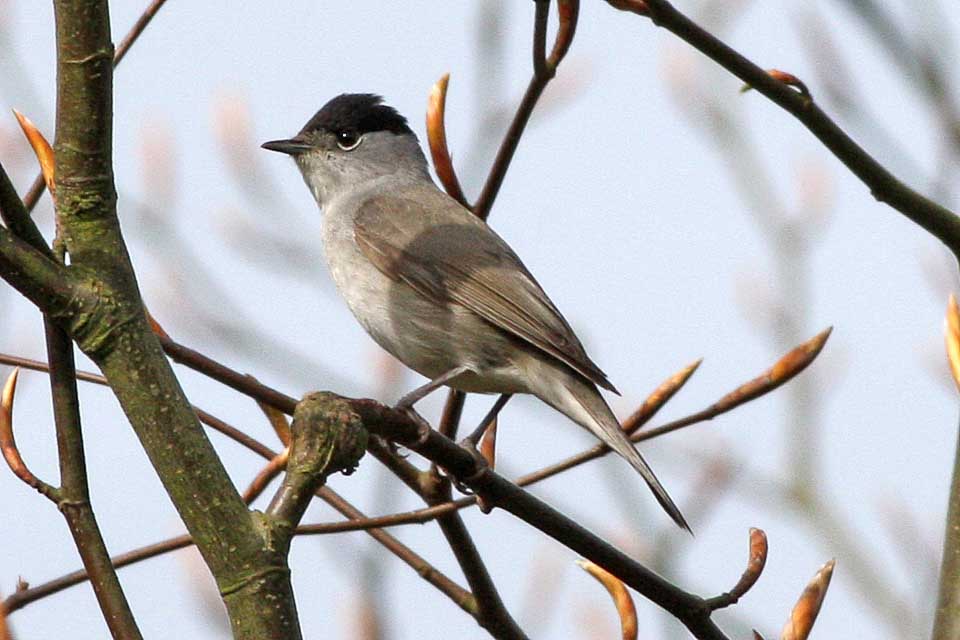
The Sylviid warblers are a family of passerine birds found in Eurasia and Africa. They include the typical warblers as well as babblers that were formerly part of the Old World babbler family.
These birds have slender bodies, pointed wings, long tails and strong legs adapted for ground-dwelling habits like running or hopping along branches.
The male often has bright colors while females are usually duller in coloration with more muted plumage patterns than males.
Some species also show sexual dimorphism where one sex may be larger or smaller than its counterpart; for instance some species may have longer tail feathers on the female side compared to their male counterparts.
Many members of this group feed on insects but some specialize on seeds, fruits, nectar or even frogs.
Scientific classification:
| Kingdom | Animalia |
| Phylum | Chordata |
| Class | Aves |
| Order | Passeriformes |
| Superfamily | Sylvioidea |
| Family | Sylviidae Leach, 1820 |
Also Featured In: Birds That Live in Iraq, Native Birds of Kazakhstan
14. Stone-Curlew

Stone-curlews, also known as dikkops or thick-knees, are a family of birds that have adapted to live in tropical and temperate regions throughout the world.
They can be found in Africa, Asia and Australia with two or more species per region. Despite being classified as waders, most prefer dry arid habitats over moist wetlands.
Stone-curlews typically have long legs which help them navigate through their preferred terrain efficiently; some species even stand at an impressive height when standing on those long legs.
Additionally they feature cryptic plumage which helps them blend into their surroundings while hunting for prey such as insects and small mammals like rodents.
These unique bird’s calls are easily recognizable; it has been said that hearing one is similar to listening to someone whistling ‘Keee Weee’.
Scientific classification:
| Kingdom | Animalia |
| Phylum | Chordata |
| Class | Aves |
| Order | Charadriiformes |
| Suborder | Chionidi |
| Family | Burhinidae Mathews, 1912 |
15. Procellariidae
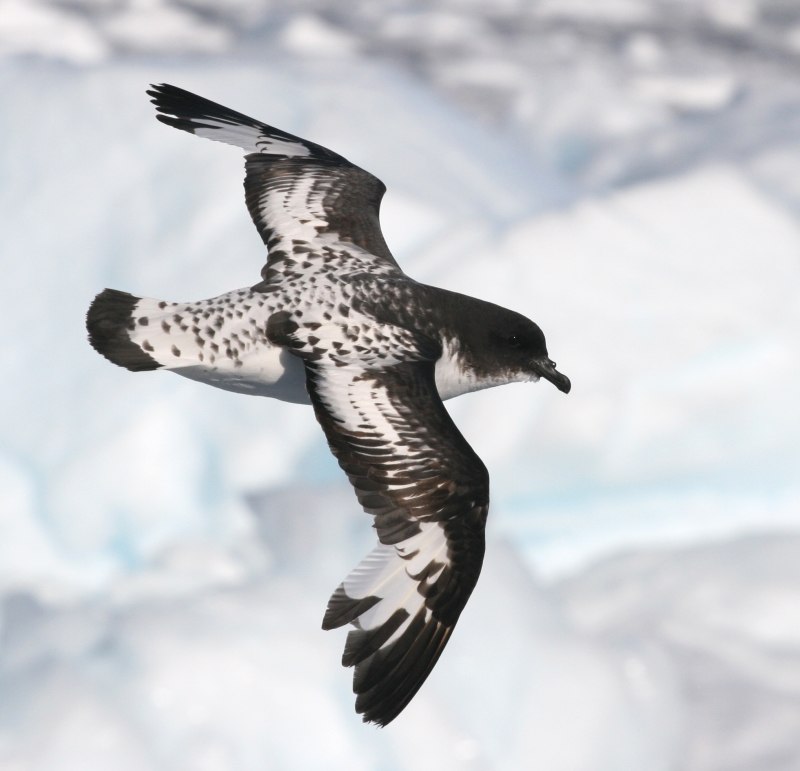
Procellariidae is a diverse family of seabirds belonging to the bird order Procellariiformes.
These birds are commonly referred to as tubenoses and include fulmarine petrels, gadfly petrels, diving petrels, prions, and shearwaters.
They range in size from the small storm-petrel which measures around 18cm long to the giant albatross which can reach up to 3 meters in length.
Generally found near oceans or coasts where they feed on fish as well as squid and other marine life depending on species.
Many procellariids will also nest inland during breeding season before returning back out at sea for most of their lives.
Their wings have specially adapted feathers that give them incredible gliding abilities allowing them literally fly with minimal effort over vast distances across oceanic regions.
Scientific classification:
| Kingdom | Animalia |
| Phylum | Chordata |
| Class | Aves |
| Order | Procellariiformes |
| Family | Procellariidae Leach, 1820 |
16. Buttonquail
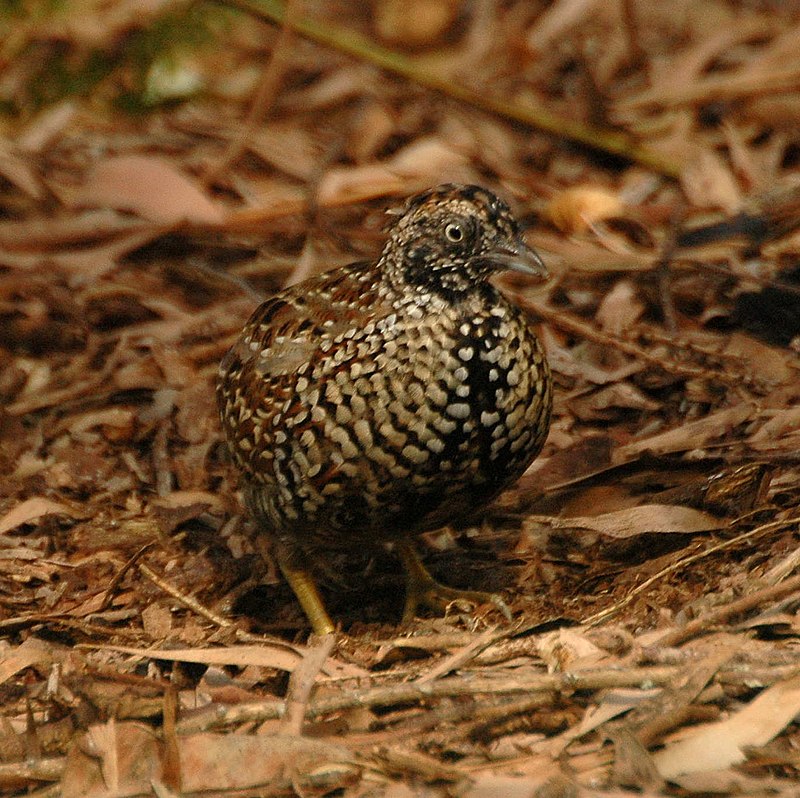
Buttonquails are small, terrestrial birds belonging to the family Turnicidae. They can be found in warm grasslands of Asia, Africa, Europe and Australia.
There are 18 species found across two genera; most being placed under the genus Turnix with a single species known as Ortyxelos.
These birds share a superficial resemblance to quail from Phasianidae but lack any close relation.
Buttonquails avoid flying and instead prefer running on their short legs for navigational purposes.
In terms of physicality they have drab colouring which comprises mostly browns or greys whilst sporting distinctive white patches around their eyes making them easy to identify within dense foliage areas where they usually hide away during times of danger or distress.
Scientific classification:
| Kingdom | Animalia |
| Phylum | Chordata |
| Class | Aves |
| Order | Charadriiformes |
| Family | Turnicidae GR Gray, 1840 |
Also Featured In: Most Common Taiwan Birds, Birds that Live around Victoria
17. Phasianidae
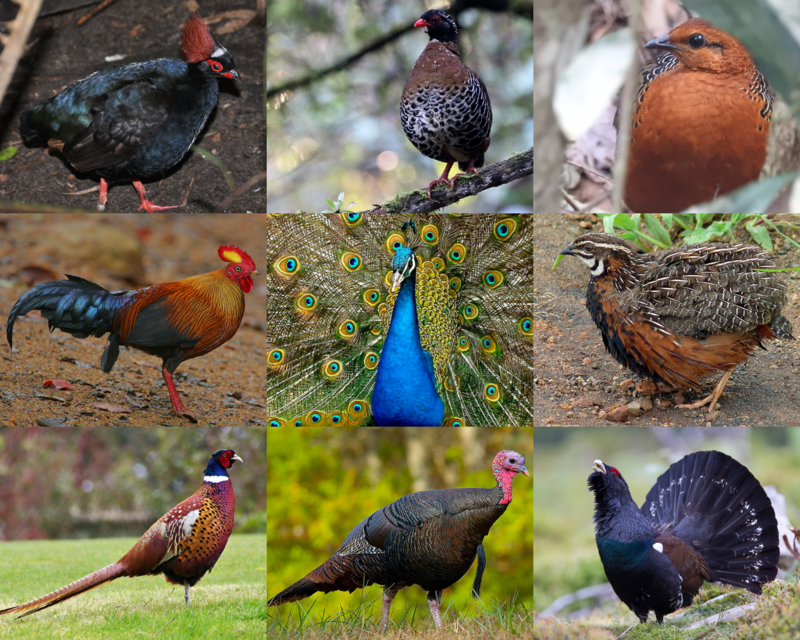
The Phasianidae family of birds is one that contains many popular gamebirds, with a total of 185 species divided across 54 genera.
These heavy ground-living birds include pheasants, partridges, junglefowl, chickens, and turkeys among others like Old World quail and peafowl.
This large family was formerly split into two subfamilies known as the Phasianinae and Perdicinae but this classification has since been changed to reflect more current scientific findings on them.
All these different types of birds have certain things in common such as their strong legs for scratching through leaves or soil looking for food items including insects, seeds, and other vegetation which makes up most of their diet.
They also all tend to be quite colorful in order to attract mates during breeding season when males will often display vibrant feathers or do dances around females in an attempt at courtship ritual displays.
The majority are monogamous creatures too although some may form short-term pair bonds before going off alone again once mating has taken place – either way.
There tends to be very little parental care given by adults after eggs have hatched so chicks need to fend for themselves right away.
Scientific classification:
| Kingdom | Animalia |
| Phylum | Chordata |
| Class | Aves |
| Order | Galliformes |
| Superfamily | Phasianoidea |
| Family | Phasianidae Horsfield, 1821 |
18. Threskiornithidae
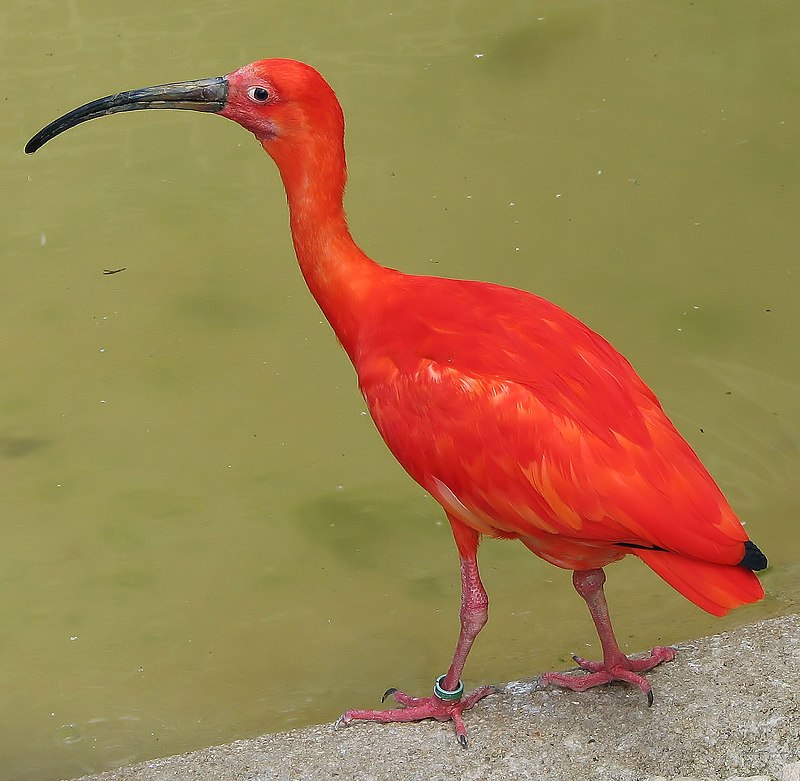
Threskiornithidae is a family of large wading birds which includes 36 species. These birds are traditionally divided into two subfamilies – the ibises and the spoonbills.
However, recent genetic analysis has shown that spoonbills actually belong to Old World ibis group, while New World ibises form an early offshoot from this lineage.
Threskiornithidse members have long curved beaks with serrated edges used for catching fish in shallow water or mudflats, as well as other aquatic invertebrates like crustaceans and mollusks.
They also feed on plant matter such as grains and seeds found close to wetlands areas where they live.
This diverse diet makes them important scavengers in their ecosystems, helping maintain healthy populations of native wildlife by controlling insect numbers and dispersing energy-rich seeds throughout wetland habitats.
Scientific classification:
| Kingdom | Animalia |
| Phylum | Chordata |
| Class | Aves |
| Order | Pelecaniformes |
| Suborder | Ardei |
| Family | Threskiornithidae Richmond, 1917 |
19. Sittidae
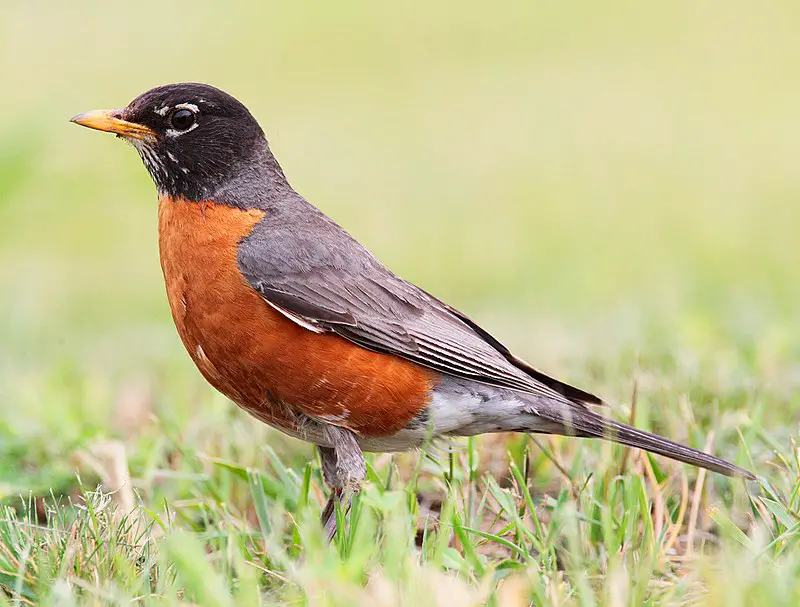
Sittidae is a family of small, seed-eating birds found in woodlands and forests. Commonly known as nuthatches, these birds have short tails, long toes for gripping tree bark, and sharp bills that help them to crack open seeds.
They are active creatures that often scramble up trees headfirst in search of food or nesting cavities. In addition to eating nuts and other plant matter they also consume insects such as caterpillars which makes them beneficial garden visitors too.
Sittidae species vary greatly in size with some being quite small while others may reach lengths of over 8 inches (20 cm). Their coloring can range from grayish browns through to blues and whites depending on the species involved.
These adaptable little birds make great additions to any backyard bird watching list due their interesting behaviors an attractive colors.
20. Regulidae
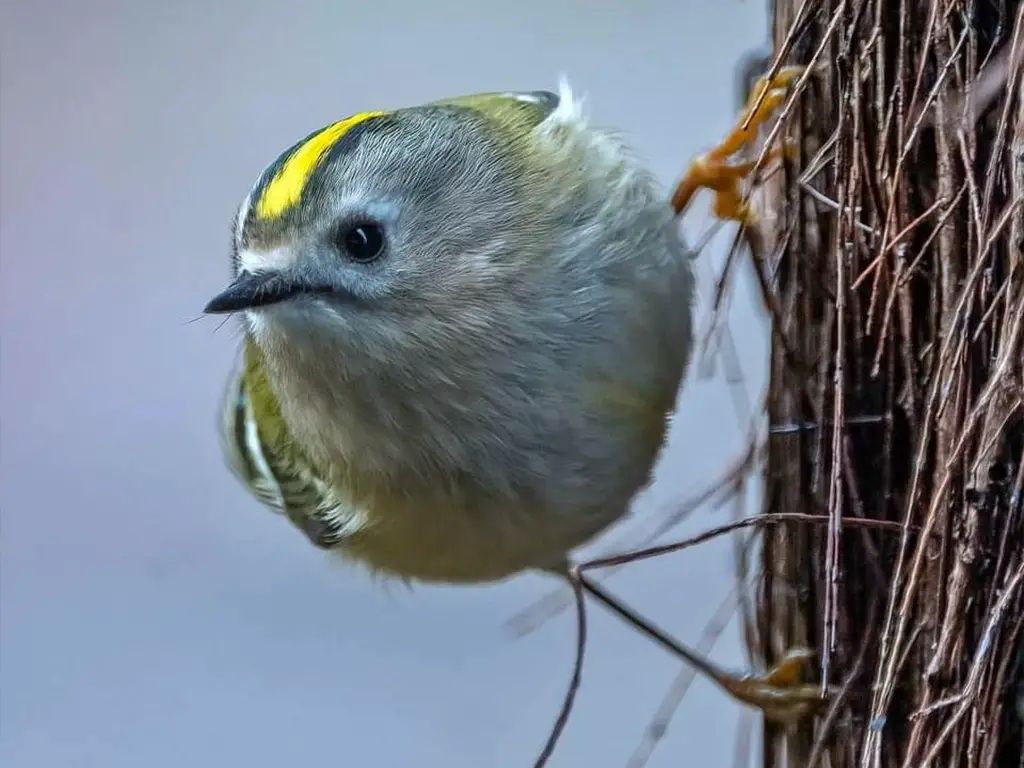
Sittidae is a family of small, seed-eating birds found in woodlands and forests. Commonly known as nuthatches, these birds have short tails, long toes for gripping tree bark, and sharp bills that help them to crack open seeds.
They are active creatures that often scramble up trees headfirst in search of food or nesting cavities. In addition to eating nuts and other plant matter they also consume insects such as caterpillars which makes them beneficial garden visitors too.
Sittidae species vary greatly in size with some being quite small while others may reach lengths of over 8 inches (20 cm). Their coloring can range from grayish browns through to blues and whites depending on the species involved.
These adaptable little birds make great additions to any backyard bird watching list due their interesting behaviors an attractive colors.
21. Painted-Snipe
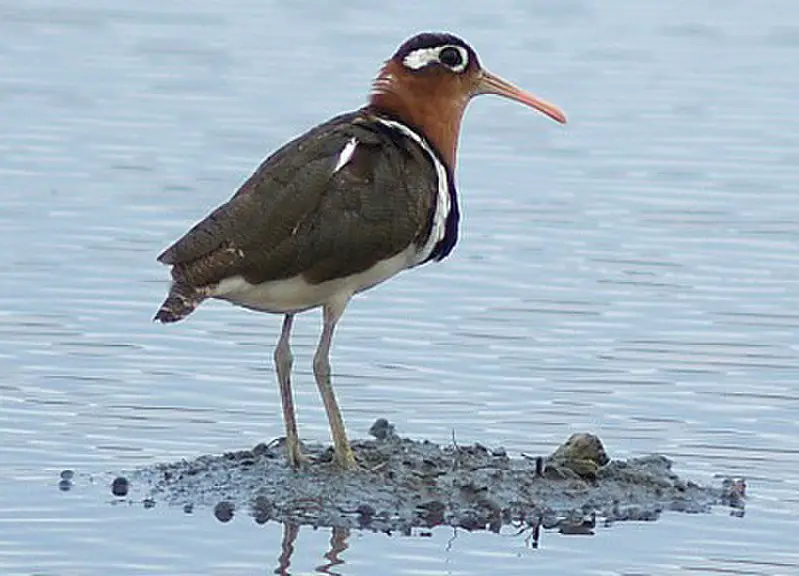
Painted snipes are beautiful and unique wading birds found in the Rostratulidae family. They have short legs, long bills, and a striking plumage which distinguishes them from true snipes.
Males tend to be smaller than females with duller overall coloration. There are three species of painted snipe.
The Greater Painted Snipe, Lesser Painted Snipe, and Australian Painted Snipe – all three have different habitats ranging from wetland pools to grasslands or mangroves depending on their region.
These birds feed mainly on earthworms but also consume insects, crustaceans and plant material when available.
As they rely heavily on wetlands for breeding purposes it is important that we protect these precious habitats so that this special bird can continue to thrive.
Scientific classification:
| Kingdom | Animalia |
| Phylum | Chordata |
| Class | Aves |
| Order | Charadriiformes |
| Suborder | Thinocori |
| Family | Rostratulidae Coues, 1888 |
22. Long-Tailed Tits
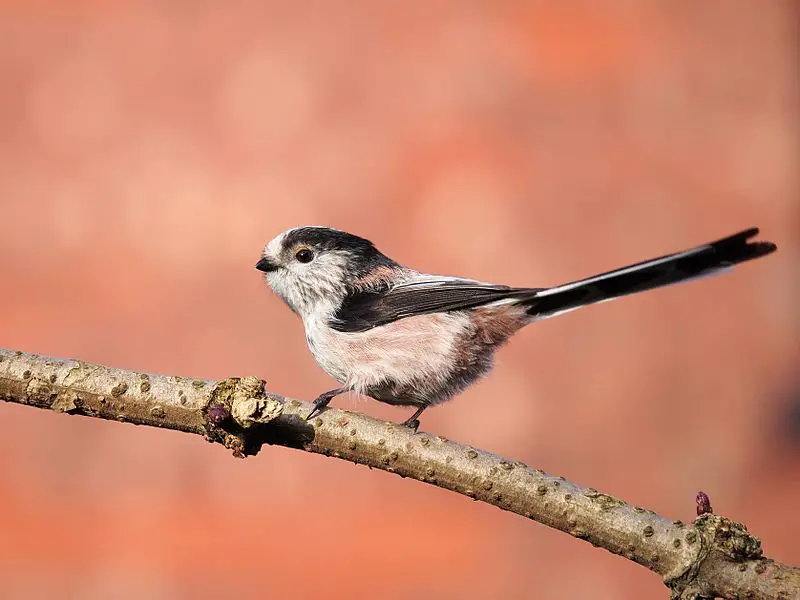
Long-tailed tits are a small passerine bird family with long tails compared to their size. They have 13 species in 3 genera, and they mostly live in Eurasia.
These birds love to stay active by foraging for insects among shrubs and trees throughout the day.
During non-breeding season, these birds can be found living together in large flocks of up to 50 individuals.
These playful little creatures make wonderful companions due to their social nature and cheerful personalities.
Their bright plumage also adds a beautiful splash of colour wherever they go.
Scientific classification:
| Kingdom | Animalia |
| Phylum | Chordata |
| Class | Aves |
| Order | Passeriformes |
| Superfamily | Sylvioidea |
| Family | Aegithalidae Reichenbach, 1850 |
Also Featured In: Bulgarian Birds, Common Denmark Birds
23. Treecreepers
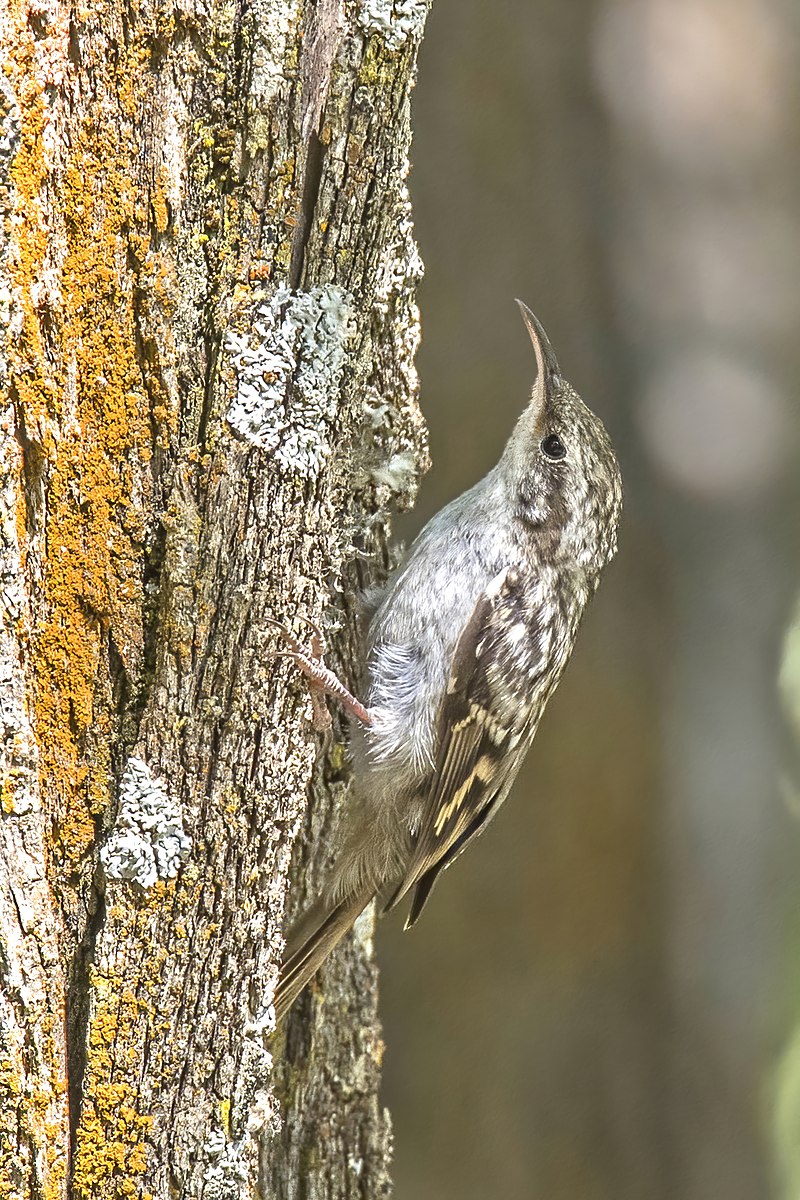
Treecreepers are small passerine birds found in wooded areas of the Northern Hemisphere and sub-Saharan Africa.
They have dull colored plumage, long curved bills, stiff tails and strong feet that help them to climb up tree trunks while searching for food such as insects and spiders.
The two genera Certhia and Salpornis include eleven species which can be identified by their distinct call – a high pitched ‘tsee-tsit’.
Treecreepers build cup shaped nests on trees usually near the base or middle trunk using mosses, lichens, grasses with leaves inside them to provide insulation from cold temperatures.
These birds also use bark crevices during winter months when they shelter in groups together against extreme weather conditions.
Scientific classification:
| Kingdom | Animalia |
| Phylum | Chordata |
| Class | Aves |
| Order | Passeriformes |
| Superfamily | Certhioidea |
| Family | Certhiidae Leach, 1820 |
Also Featured In: Flocks Birds around Us, Birds Found in Hungary
24. Northern Storm Petrels
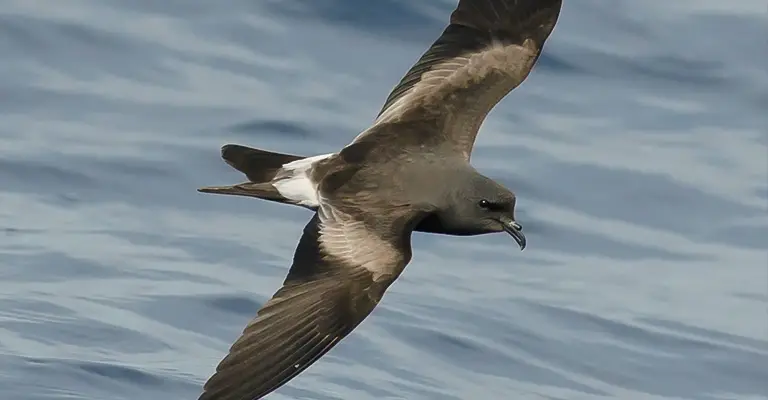
Northern storm petrels are one of the smallest seabirds, inhabiting oceans all over the world.
They have a unique ability to hover over water and pick planktonic crustaceans and small fish from the surface.
Northern storm petrels belong to the genus Hydrobates in family Hydrobatidae, part of Procellariiformes order.
This species was once lumped with austral storm petrel but recent studies show that they weren’t related closely which led them being split into two distinct species now.
These birds can be identified by their dark grey upperparts and wings along with white underparts when seen from afar while feeding on ocean’s surface.
Scientific classification:
| Kingdom | Animalia |
| Phylum | Chordata |
| Class | Aves |
| Order | Procellariiformes |
| Family | Hydrobatidae Mathews, 1912 |
| Genus | Hydrobates F. Boie, 1822 |
25. Vireonidae
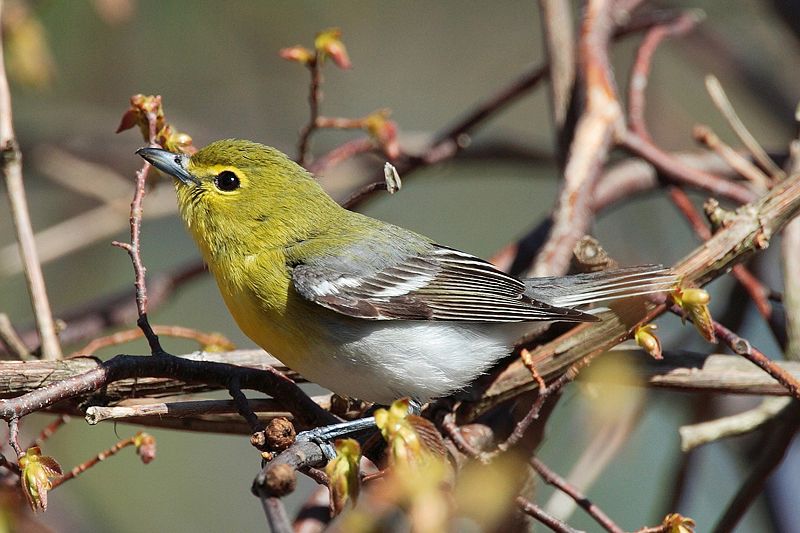
Vireonidae birds are a family of passerine birds found in the New World, Southeast Asia and other tropical regions.
They have dull plumage with greenish coloration and typically measure between small to medium sizes.
These migratory birds were so named by Latin referring to the female golden oriole or even European greenfinch.
Vireo species can be seen perching on branches while they feed mainly on insects such as caterpillars, beetles, grasshoppers and cicadas among others; some also eat fruits which provide them with essential nutrients for their diet.
As well as being known for their musical chirpings during mating season these colourful little creatures make wonderful additions to any garden.
Scientific classification:
| Kingdom | Animalia |
| Phylum | Chordata |
| Class | Aves |
| Order | Passeriformes |
| Superfamily | Orioloidea |
| Family | Vireonidae Swainson, 1837 |
Also Featured In: Most Common Lake Birds, Asian Birds
26. Plovers

Plovers are a family of around 64-68 species of ground-dwelling birds, commonly found in open country such as fields, meadows and tundras.
They have short bills with webbed feet to help them forage through mud or shallow water.
Plover plumage is usually mottled brown though some species may have brighter colors on the head and wings.
These birds feed mainly on insects but can also eat small crustaceans and worms.
Plovers breed during springtime when they dig holes in sandy or pebbled beaches to lay their eggs which hatch after about 3 weeks incubation period.
They use distraction display behaviour by pretending an injury to the predators away from their nests if needed for protecting their young ones.
Scientific classification:
| Kingdom | Animalia |
| Phylum | Chordata |
| Class | Aves |
| Order | Charadriiformes |
| Family | Charadriidae Leach, 1820 |
27. Stilts And Avocets
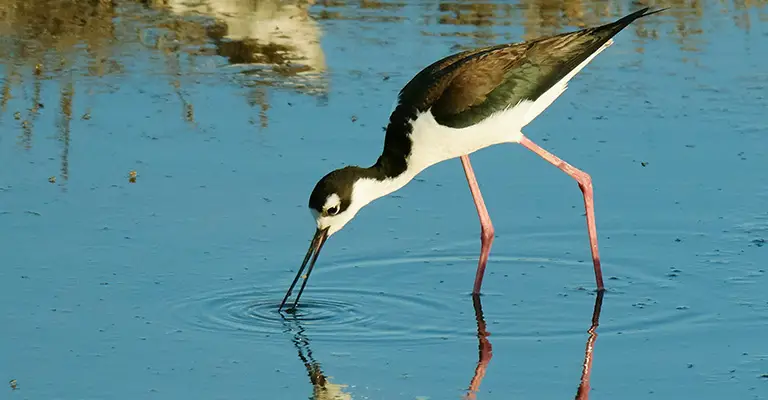
Stilts and avocets are two distinct groups of birds belonging to the family Recurvirostridae. They range in length from 30-46 cm (12-18 inches) and weigh between 140 – 435 g (4.9 – 15.3 ounces).
Males usually have slightly larger bodies than females, with long thin legs, necks and bills.
Avocet bills curve upwards uniquely while stilt beaks remain straight most times.
These wading birds live mainly near shorelines or wetlands where they feed on aquatic invertebrates like brine shrimp, insects etc., occasionally supplementing their diet with seeds or small fish too.
Stilts also inhabit open fields in search of food sources such as earthworms or grasshoppers during the non-breeding season.
Both groups migrate over large distances for warmer weathers when it gets cold outside.
Scientific classification:
| Kingdom | Animalia |
| Phylum | Chordata |
| Class | Aves |
| Order | Charadriiformes |
| Suborder | Charadrii |
| Family | Recurvirostridae Bonaparte, 1854 |
28. Glareolidae
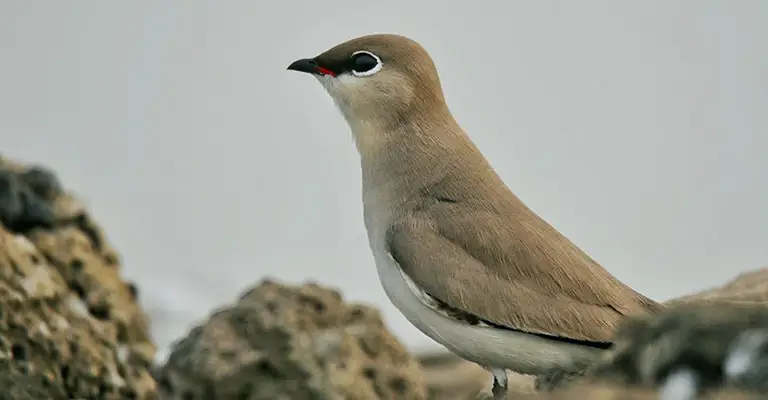
Glareolidae is a family of wading birds, consisting of four genera and 17 species. They are distinguished from other charadrii by their long bills which have a slight downward curve.
Glareolidae live around open grasslands and deserts, where they hunt for insects using the bill to probe into soil or vegetation.
Most species are found in Africa but two pratincoles inhabit parts of Europe and Asia as well.
Coursers tend to be larger than pratincoles with longer legs allowing them to run quickly across sandy dunes while feeding on small animals like lizards or spiders.
Pratincoles feed mainly on flying insects, snatching them out of midair with great agility during flight.
All glareolids share unique features such as large eyes that help it spot prey at night easily making this group one interesting bird family.
Scientific classification:
| Kingdom | Animalia |
| Phylum | Chordata |
| Class | Aves |
| Order | Charadriiformes |
| Suborder | Lari |
| Family | Glareolidae CL Brehm, 1831 |
29. Bushshrike
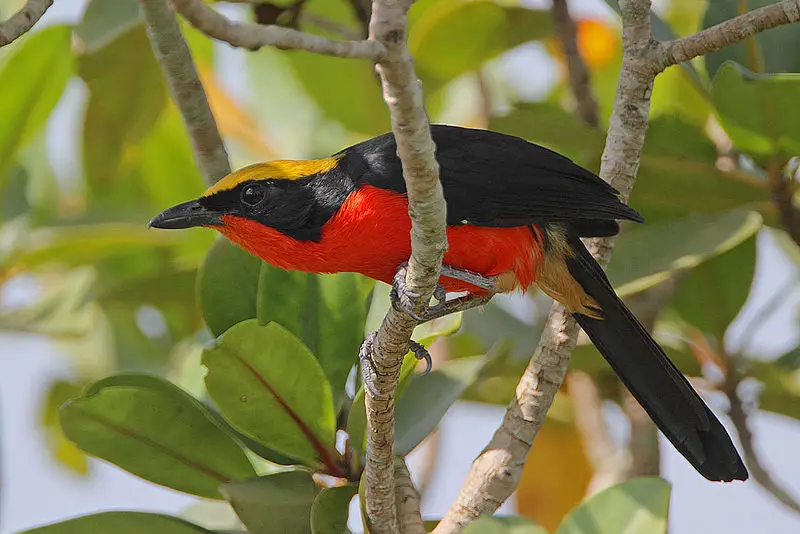
Bushshrikes are a family of small passerine birds native to Africa. Their ruffled back and rump feathers distinguish them from other shrike-like relatives, such as helmetshrikes.
They have bright plumages that vary in color depending on the species, but typically feature black wings with white or yellow markings.
Bushshrikes feed mainly on insects while also occasionally consuming fruits, berries and seeds.
They often hunt by perching atop tall trees and scanning for prey before swooping down upon their target when spotted.
During breeding season males sing melodious songs to attract mates while females build nests in dense foliage near the forest floor using sticks, leaves and grasses lined with soft mossy material or fur plucked from dead animals.
Scientific classification:
| Kingdom | Animalia |
| Phylum | Chordata |
| Class | Aves |
| Order | Passeriformes |
| Superfamily | Malaconotoidea |
| Family | Malaconotidae Swainson, 1824 |
30. Old World Orioles
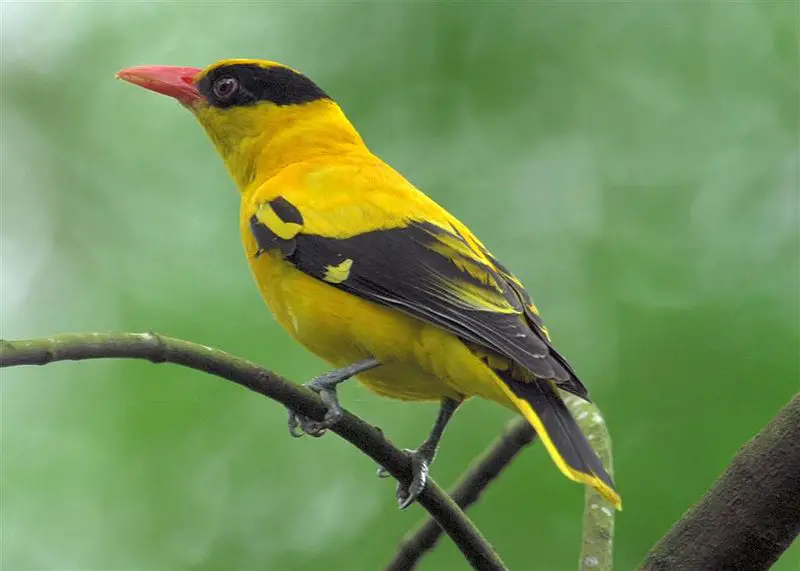
Old World orioles are a family of passerine birds found in the Old World. It comprises four genera: piopios, figbirds, pitohuis and the original genus Oriolus.
The African black-headed species have sometimes been removed from this latter group due to their distinct characteristics as well as other proposed splits for Oriolus.
These colorful birds can be identified by their bright yellow or orange plumage that often features darker markings on wings and head areas, although some species may also display a blue hue or stripes across the body feathers.
They typically feed on insects such as caterpillars and grasshoppers but will supplement with small fruits when available too – making them beneficial additions to gardens.
Scientific classification:
| Kingdom | Animalia |
| Phylum | Chordata |
| Class | Aves |
| Order | Passeriformes |
| Superfamily | Orioloidea |
| Family | Oriolidae Vigors, 1825 |
31. Austral Storm Petrels
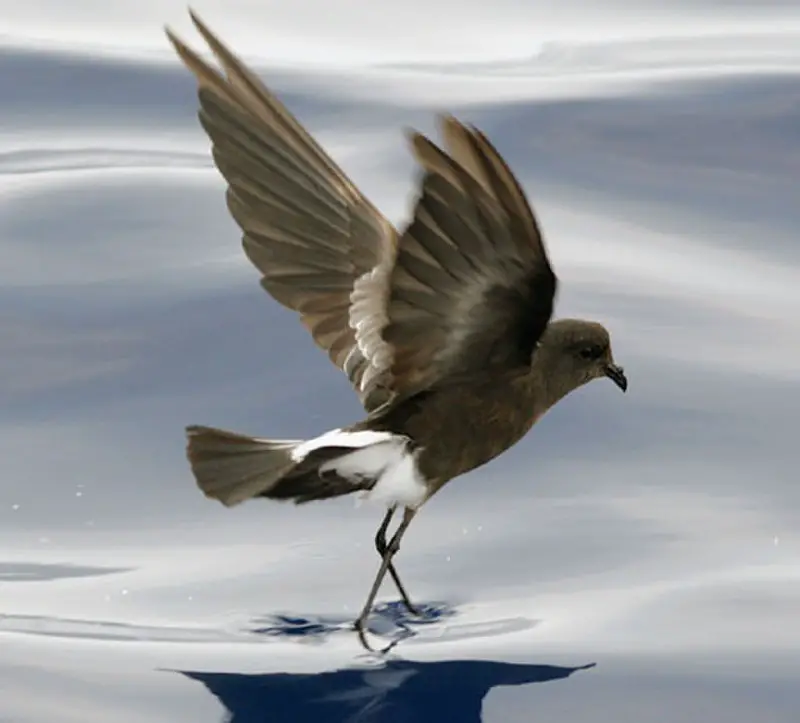
Austral Storm Petrels are the smallest of seabirds, belonging to the family Oceanitidae and order Procellariiformes.
They have a cosmopolitan distribution across all oceans, with their flight being fluttering and sometimes bat-like in appearance.
These birds feed on planktonic crustaceans as well as small fish that they pick from the surface while hovering over it.
Their plumage is mostly dark grey or blackish brown above; underparts may be white or mottled gray.
The feet vary between species but usually have pale yellow webs and claws which help them move easily through water when searching for food.
Austral storm petrels often make nests on remote islands where these birds can breed safely without any disturbances from humans during their nesting season.
Scientific classification:
| Kingdom | Animalia |
| Phylum | Chordata |
| Class | Aves |
| Order | Procellariiformes |
| Family | Oceanitidae Forbes, 1881 |
Also Featured In: Birds that You’ll Find in Puerto Rico, Birds that Live in Tamil Nadu
32. Falcons And Caracaras
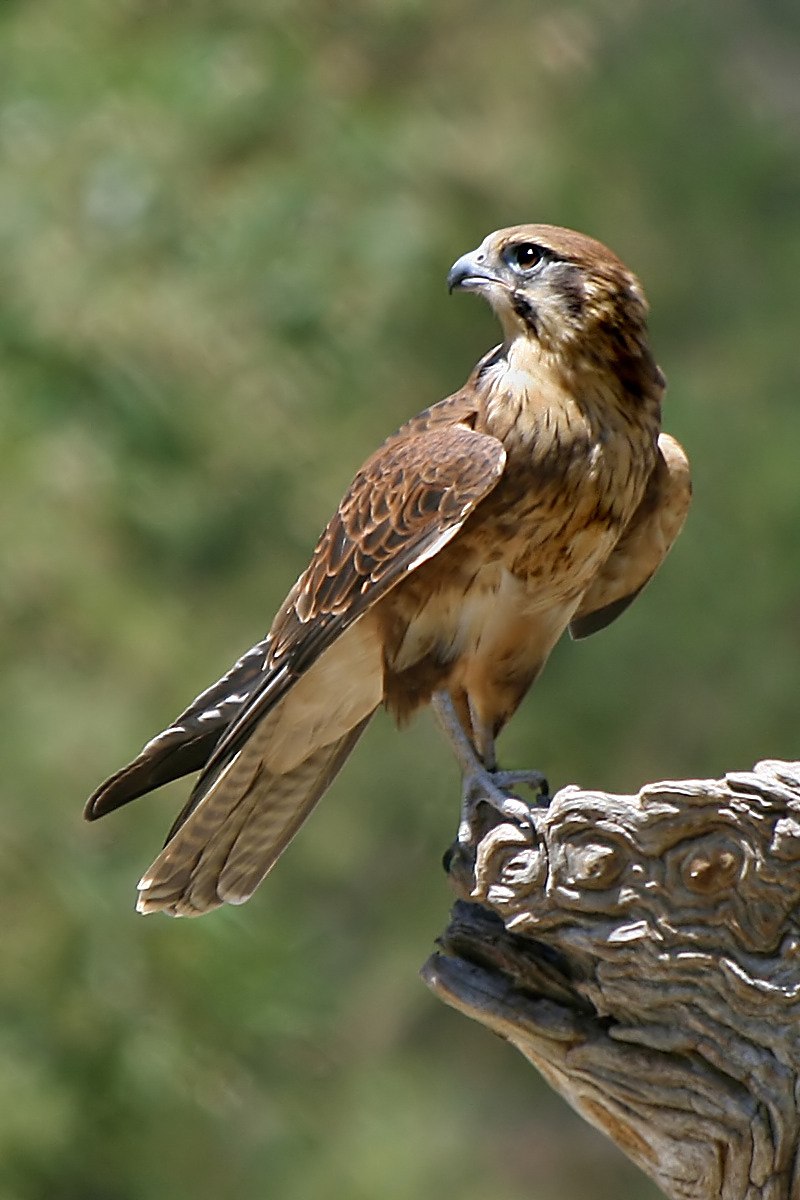
Falcons and caracaras are birds of prey that belong to the family Falconidae. They have impressive sharp talons, hooked beaks and keen eyesight which makes them excellent hunters.
Falcons can reach speeds up to 200 mph when diving for their prey while caracaras use a combination of running and flying to hunt small mammals such as rabbits or rats.
Both falcons and caracaras live in various areas around the world from grasslands, deserts, forests, wetlands or even urban areas where they nest on cliffs or tall buildings.
The diet mainly consists insects but also includes larger animals like reptiles or other birds which they catch by surprise with fast dives out of the sky.
Scientific classification:
| Kingdom | Animalia |
| Phylum | Chordata |
| Class | Aves |
| Order | Falconiformes |
| Family | Falconidae Leach, 1820 |
33. Laughingthrushes
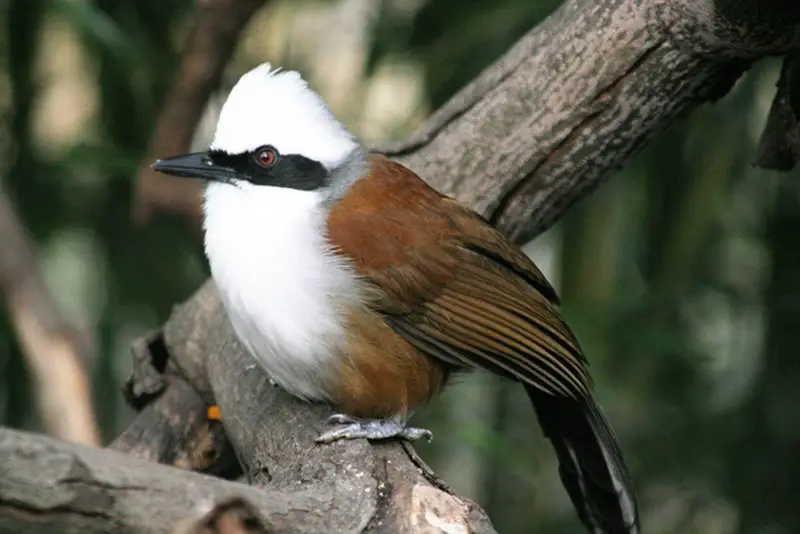
Laughingthrushes are a family of passerine birds found in tropical areas, primarily Southeast Asia and the Indian subcontinent.
They vary greatly in size and coloration but generally they have strong legs and many species are terrestrial or semi-terrestrial.
These birds typically inhabit forests where they feed on insects, fruits, seeds and occasionally small vertebrates.
The diet varies depending on the species as some prefer to forage among foliage while others look for food along the forest floor or take it from trees high up in their habitat.
In general these active creatures live in flocks that can range from just a few individuals to large groups with dozens of members making them quite vocal at times.
Scientific classification:
| Kingdom | Animalia |
| Phylum | Chordata |
| Class | Aves |
| Order | Passeriformes |
| Superfamily | Sylvioidea |
| Family | Leiothrichidae Swainson, 1832 |
Also Featured In: Syrian Birds You Need to Know, Birds Commonly Found in Slovenia
34. Desert Wheatear
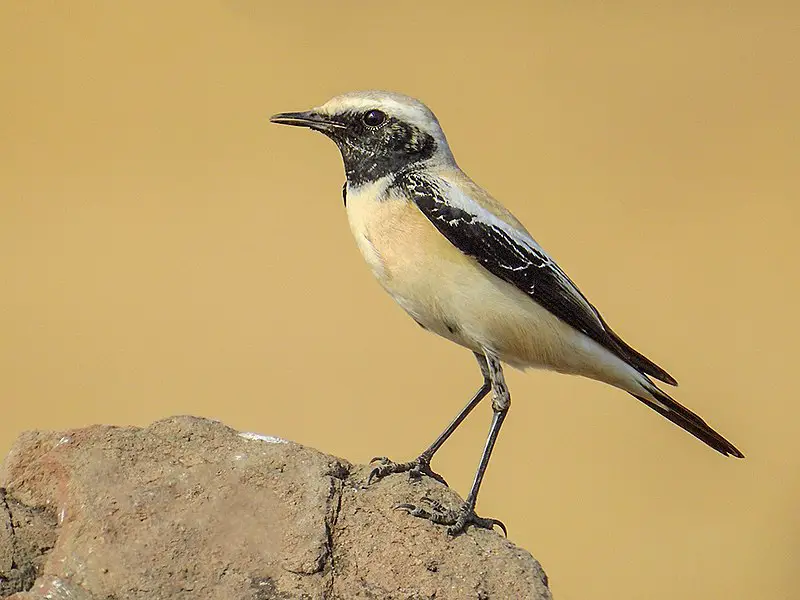
The Desert Wheatear is a small passerine bird that typically inhabits desert and semi-desert areas. It measures 14.5 to 15 cm in length, making it slightly larger than most thrushes but smaller than many Old World flycatchers.
The upper parts of this species are greyish-brown with black streaking, while the underparts are whitish or buffy white with some cinnamon on its sides and flanks.
Its tail has two prominent white bars at the tip which contrast starkly against its otherwise dark plumage.
During breeding season males will often display their conspicuous orange throat patch as part of courtship behaviour towards females of the species.
However, outside of mating season both sexes share identical plumages without any discernible differences between them apart from size variations common among all birds.
This insectivorous species mostly feeds on flying insects such as moths, beetles and bees that they catch midair during short sallies out into open spaces near coverts where they can hide if threatened by predators like other birds or mammals roaming their habitat range throughout Eurasia including rare vagrants to western Europe.
Scientific classification:
| Kingdom | Animalia |
| Phylum | Chordata |
| Class | Aves |
| Order | Passeriformes |
| Family | Muscicapidae |
| Genus | Oenanthe |
| Species | O. deserti |
Also Featured In: Lebanon Birds Live in Semi-Desert Areas,
35. Eremalauda
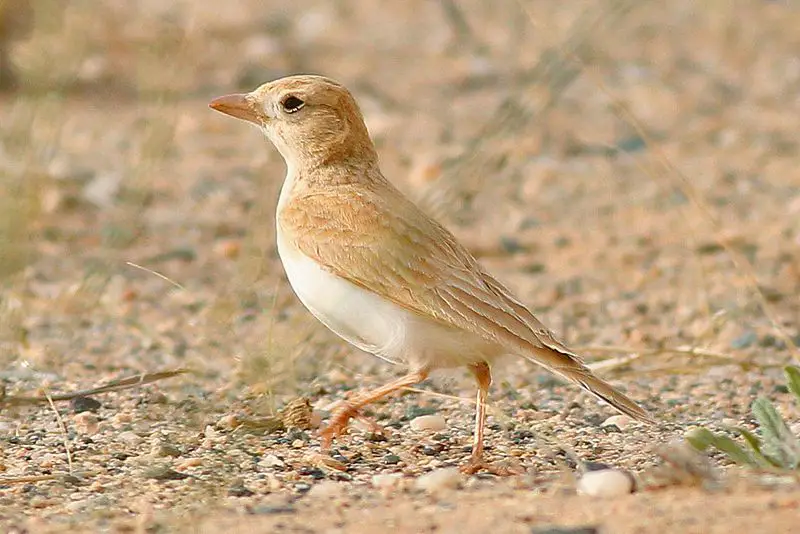
Eremalauda is a genus of birds belonging to the lark family. It comprises two species: Dunn’s Lark and Stark’s Lark, both found primarily in desert regions across parts of the Sahara region.
Dunn’s Larks are typically found from Mauritania to Central Sudan while Stark’s Larks tend to inhabit areas further east into countries such as Iran, Iraq and Pakistan.
Both species have adapted well to living in arid climates with stark landscapes; they feed on seeds, insects, spiders and other small invertebrates which can be found around these habitats.
They also form permanent pair bonds during breeding season when males use their song for courtship displays.
The Eremalauda genus is an important part of its environment providing valuable food sources for animals higher up on the food chain as well as helping increase biodiversity by pollinating flowers.
Scientific classification:
| Kingdom | Animalia |
| Phylum | Chordata |
| Class | Aves |
| Order | Passeriformes |
| Family | Alaudidae |
| Genus | Eremalauda |
| Species | E. dunni |
36. Blue-Cheeked Bee-Eater
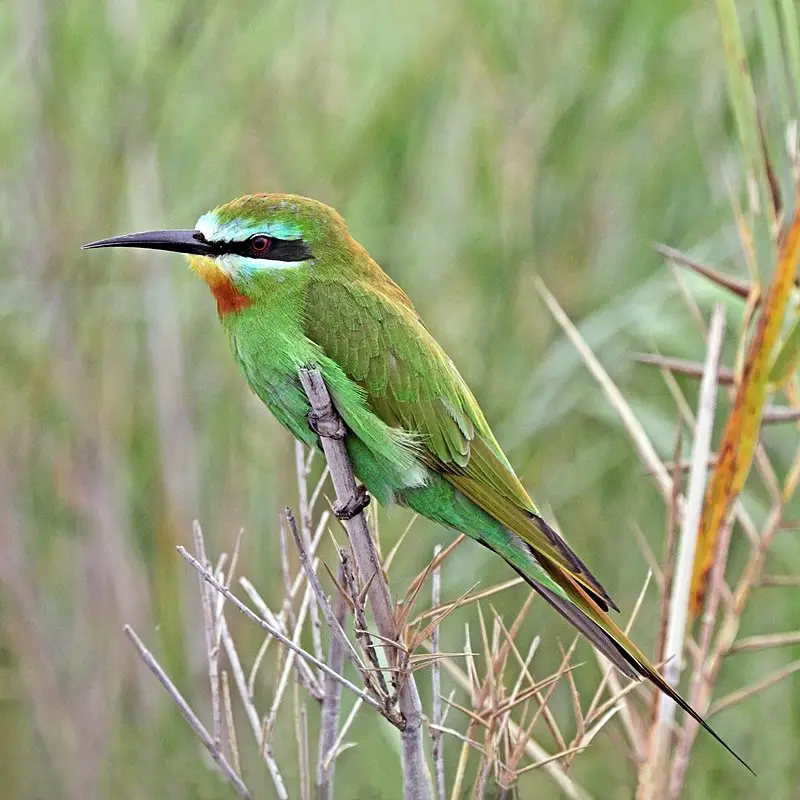
The Blue-cheeked Bee-eater (Merops persicus) is a stunningly beautiful bird belonging to the Meropidae family. It has an unmistakeable blue coloring on its cheeks and neck, which stands out against its yellow body plumage.
This species of bee-eater can be found in Northern Africa, Middle East countries from Turkey eastwards till Kazakhstan, and India as well.
During winter they migrate south to tropical regions of Africa while some populations remain put for breeding purposes year round.
They are adept at catching insects midair with their long curved bills which makes them excellent predators in open grasslands or savannas where bees and other insects thrive abundantly.
So if you ever happen across these vibrant beauties make sure to take a moment pause and appreciate nature’s wonders.
Scientific classification:
| Kingdom | Animalia |
| Phylum | Chordata |
| Class | Aves |
| Order | Coraciiformes |
| Family | Meropidae |
| Genus | Merops |
| Species | M. persicus |
Also Featured In: Armenian Birds You Should Know, Birds that Migrate in United Arab Emirates
37. Red-Knobbed Coot
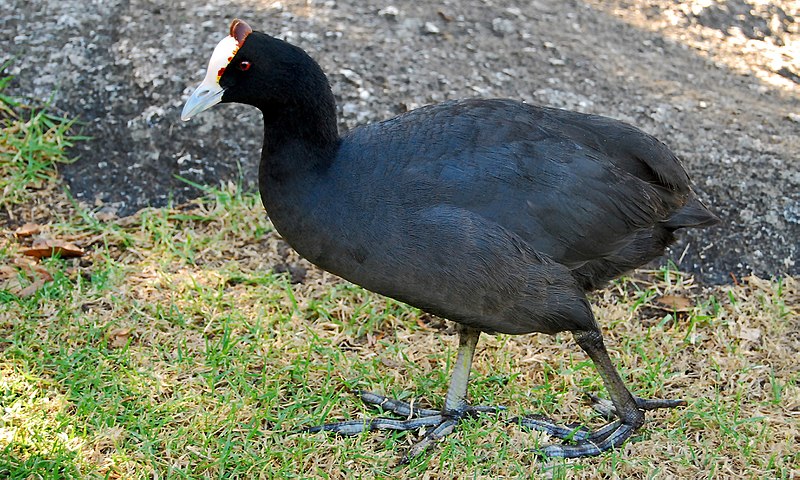
The Red-knobbed Coot is a species of rail and crake bird belonging to the Rallidae family. It is mostly found in Africa with presence in parts of southern Spain, breeding around freshwater lakes and ponds.
They build their nest from dead reeds near water’s edge or on floating platforms, laying about seven eggs but can lay more depending on environmental factors.
It was formally described by Italian ornithologist Giovanni Antonio Scopoli in 1786 as Fulica cristata which translates to “crested coot” due its distinctive red knob located above the bill that it uses for display purposes during courtship rituals.
The Red-knobbed Coot has a black body with white beak and feet, making them quite easy to spot amongst other birds native to similar habitats.
Scientific classification:
| Kingdom | Animalia |
| Phylum | Chordata |
| Class | Aves |
| Order | Gruiformes |
| Family | Rallidae |
| Genus | Fulica |
| Species | F. cristata |
38. Greater Hoopoe-Lark
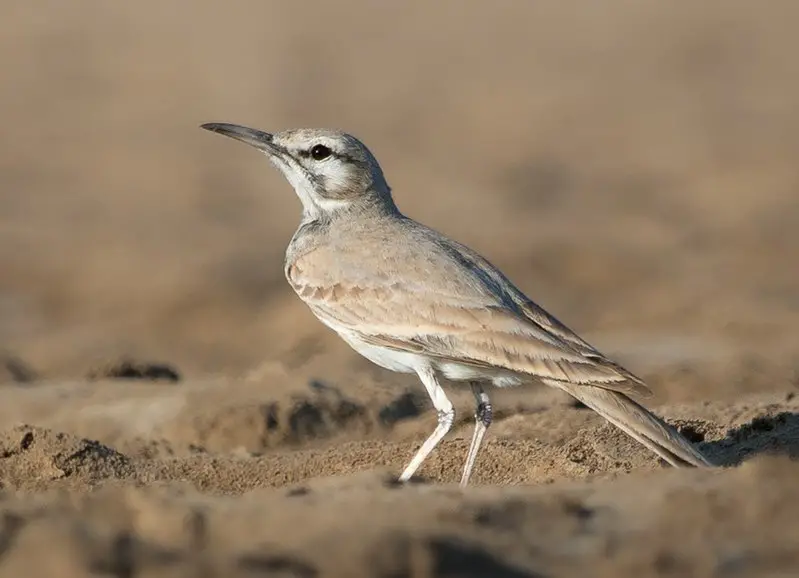
The Greater hoopoe-lark is a passerine bird that can be found in arid and semi-desert regions of Africa, the Arabian peninsula, Syria, Afghanistan, Pakistan and India.
It was formerly known as the bifasciated lark or large desert lark. These birds have adapted to living in harsh climates with little water sources by having sparse feathers which helps them retain body heat during cold nights.
They are also able to consume insects from dry soils for sustenance when food resources become scarce.
During mating season they display their distinctive markings by singing from atop bushes or trees while flapping their wings vigorously before swooping down towards potential mates on the ground below.
The greater hoopoe-larks diet mainly consists of seeds and small invertebrates like beetles, spiders and larvae making them an important part of maintaining local insect populations too.
Scientific classification:
| Kingdom | Animalia |
| Phylum | Chordata |
| Class | Aves |
| Order | Passeriformes |
| Family | Alaudidae |
| Genus | Alaemon |
| Species | A. alaudipes |
39. Barbary Partridge
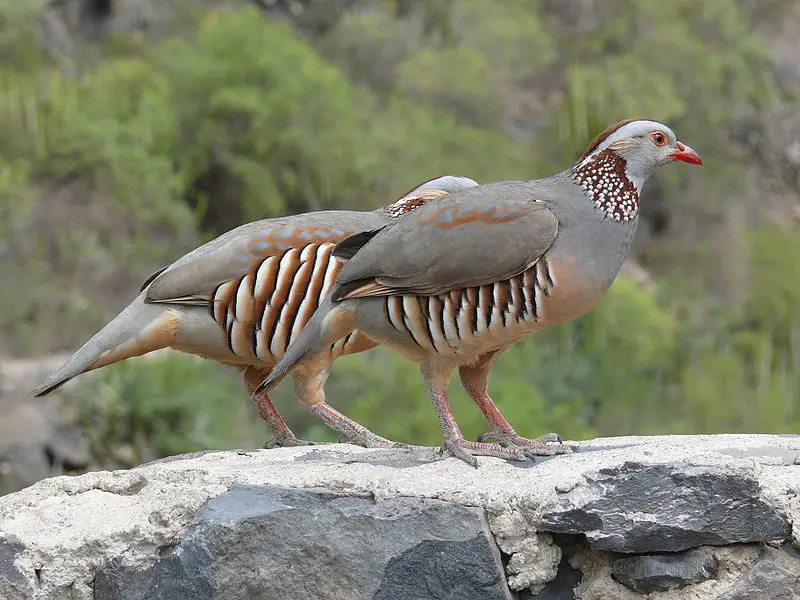
The Barbary partridge is a gamebird in the pheasant family, native to North Africa and surrounding regions such as Gibraltar and the Canary Islands.
It has been introduced to Portugal and Madeira with no recent reports of successful breeding populations outside its original range.
This species prefers open areas such as plains or scrubland, where it feeds on seeds, fruits, insects and small vertebrates like lizards. The males are larger than females with white spots on their chestnut-brown plumage.
Habitat loss due to overgrazing by livestock coupled with hunting pressure have caused declines in population numbers across much of their range making them vulnerable to local extinction if these threats continue unchecked.
Conservation measures are needed for this beautiful bird’s long-term survival.
Scientific classification:
| Kingdom | Animalia |
| Phylum | Chordata |
| Class | Aves |
| Order | Galliformes |
| Family | Phasianidae |
| Genus | Alectoris |
| Species | A. barbara |
Also Featured In: Birds of Lanzarote, Most Common Birds of Sardinia
40. Western Swamphen
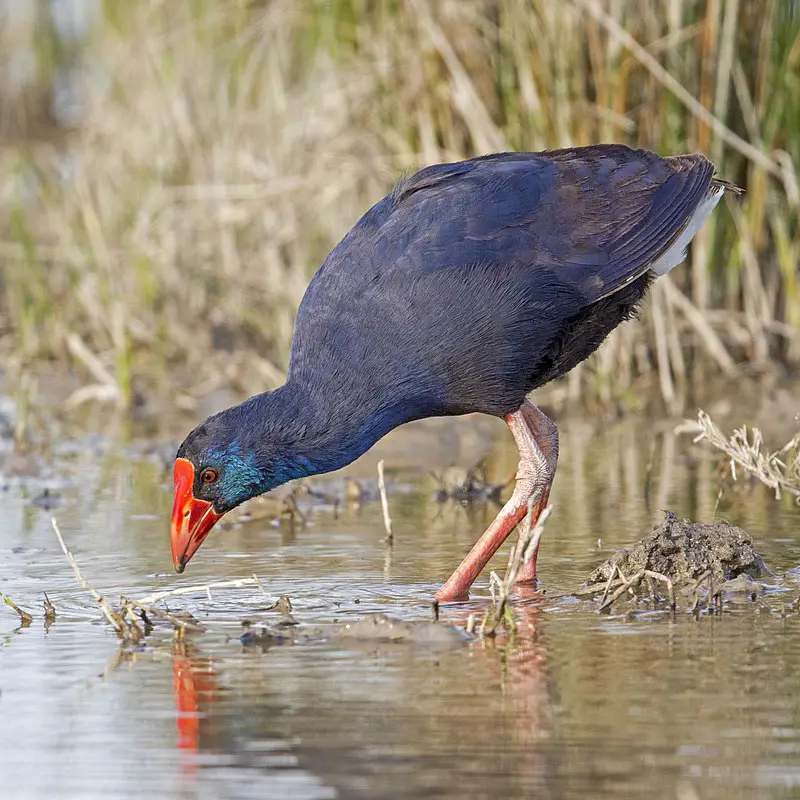
The Western Swamphen is a species of swamphen belonging to the Rallidae family. It has an impressive appearance: its bright plumage, long legs and large red bill make it easily recognizable.
Its French name ‘talève sultane’ gives it the nickname of ‘Sultana Bird’. It is typically chicken-sized but can be slightly larger in some areas.
The Western Swamphen’s diet consists mainly of aquatic vegetation such as pondweeds, watercress and rushes, along with small invertebrates like snails, insects and larvae.
Breeding usually occurs between spring and summer when mating pairs construct nests made from reed stems near shallow waters or marshlands which they defend fiercely against intruders.
The male also performs courtship displays by raising his feathers while bobbing up and down in front of potential mates to attract them into their territories for breeding purposes.
Scientific classification:
| Kingdom | Animalia |
| Phylum | Chordata |
| Class | Aves |
| Order | Gruiformes |
| Family | Rallidae |
| Genus | Porphyrio |
| Species | P. porphyrio |
Also Featured In: Common Birds of Portugal, Green Birds Commonly Found in Florida
41. Western Subalpine Warbler
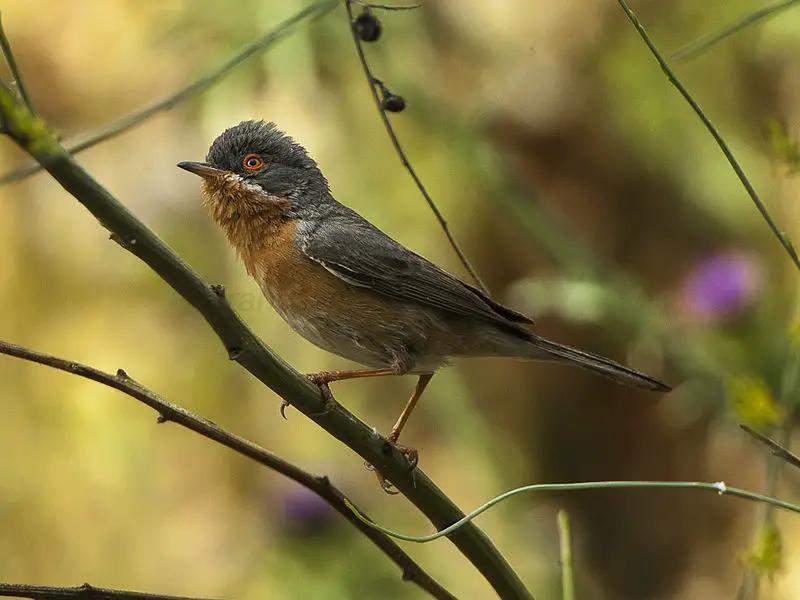
The Western Subalpine Warbler is a small, typical warbler that can be found in Europe and North-Western Africa.
It has distinct male and female plumages; the adult males have grey backs and heads with brick-red underparts as well as white malar streaks (“moustaches”).
The females are mainly brown above with a greyer head than their counterparts, while possessing whitish lower parts. Both genders of this species build nests on the ground or low bushes near water sources such as streams or rivers.
They enjoy an insectivorous diet which consists of larvae, beetles, spiders and other arthropods they find along branches or foliage.
This bird also forms flocks during migration periods to make navigation easier when travelling long distances at night time in search for better climates suitable for breeding purposes.
Scientific classification:
| Kingdom | Animalia |
| Phylum | Chordata |
| Class | Aves |
| Order | Passeriformes |
| Family | Sylviidae |
| Genus | Curruca |
| Species | C. iberiae |
Also Featured In: Most Popular Birds in Mallorca,
42. House Bunting
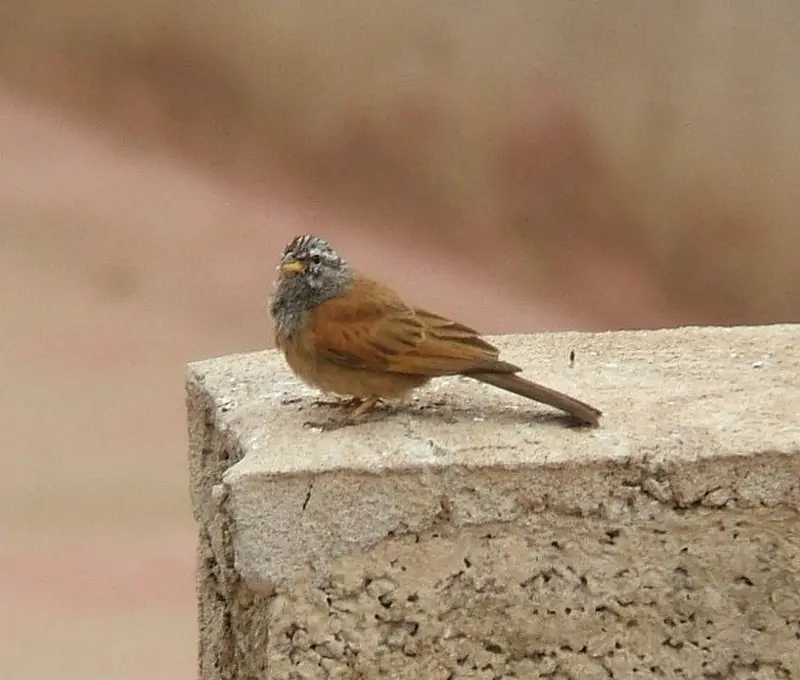
The House Bunting is a small passerine bird found in dry areas of Northwestern Africa. From Morocco to Mali and Chad, this species can be seen breeding and finding shelter during the hottest parts of the year.
It has been expanding from its traditional home in the Atlas Mountains since 1960s, as far north as Tangier and Tétouan on opposite sides of Strait Of Gibraltar. With bright plumage featuring yellowish-brown upperparts, orange underparts with black streaks along chest area plus white belly patch – it stands out among other birds in its region.
Its diet includes mostly seeds and insects which gives it much needed energy for successful breeding season throughout summer months.
Scientific classification:
| Kingdom | Animalia |
| Phylum | Chordata |
| Class | Aves |
| Order | Passeriformes |
| Family | Emberizidae |
| Genus | Emberiza |
| Species | E. sahari |
43. Crowned Sandgrouse
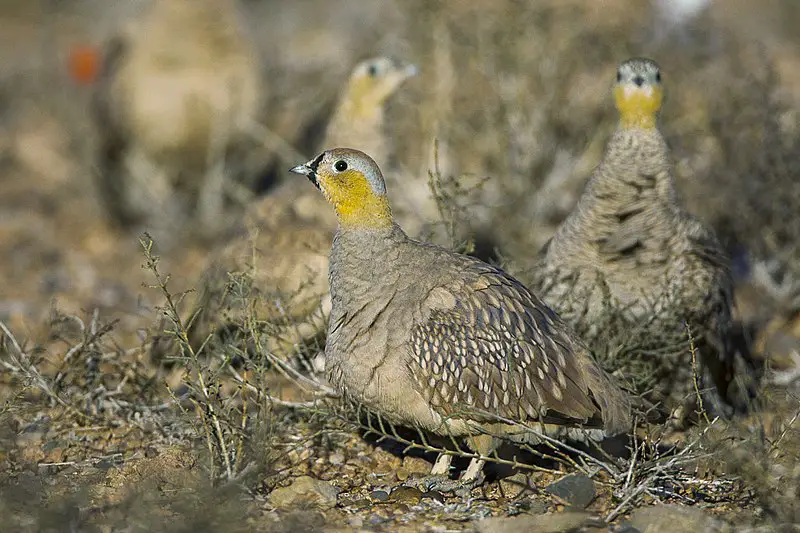
The crowned sandgrouse is a small bird with little features that can easily be distinguished from other sandgrouses. It has an overall uniform colouration, except for its darker flight feathers which are the best way to identify it.
This species of bird resides in North Africa and the Middle East, living on sandy soils where they feed mainly on seeds and insects.
During mating season males will puff up their chest feathers to form a crown-like feature as part of courtship displays – hence the name ‘crowned’.
The female will lay her eggs directly onto bare ground or sometimes into shallow scrapes so that there’s no nest structure built by either parent birds.
Crowned sandgrouses have adapted well to arid environments due to their ability to store water within specialized feathers found near their belly area — allowing them access during times when surface water sources are scarce.
Scientific classification:
| Kingdom | Animalia |
| Phylum | Chordata |
| Class | Aves |
| Order | Pterocliformes |
| Family | Pteroclidae |
| Genus | Pterocles |
| Species | P. coronatus |
44. Common Bulbul
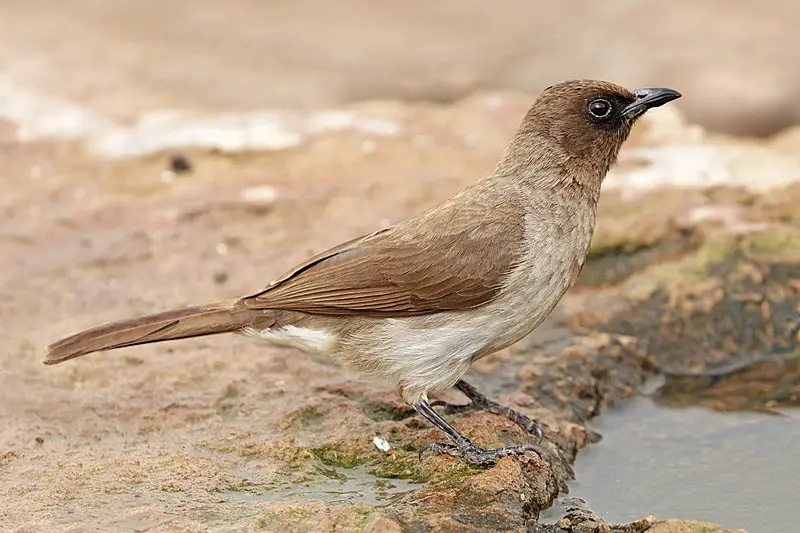
The Common bulbul is a member of the passerine bird family, found in parts of Africa. It was originally described within the Turdus genus and some authorities believe it to be closely related to Somali, Dodson’s and dark-capped bulbuls.
This species has been identified as part of a superspecies along with other African species such as White-eared Bulbuls and Streaky Bulbuls.
The common bulbul features grey head feathers while its body consists mostly of browns or olive colours depending on subspecies type.
These birds are typically seen living near wooded areas where they feed mainly on fruits, flowers, buds and insects – making them omnivorous creatures.
They have an average lifespan between 3 – 5 years but can live slightly longer if given proper care by their owners when kept as pets.
All in all these fascinating birds make for great additions to any natural environment due to their vibrant presence so next time you’re out exploring nature keep your eyes peeled for one.
Scientific classification:
| Kingdom | Animalia |
| Phylum | Chordata |
| Class | Aves |
| Order | Passeriformes |
| Family | Pycnonotidae |
| Genus | Pycnonotus |
| Species | P. barbatus |
45. Namaqua Dove
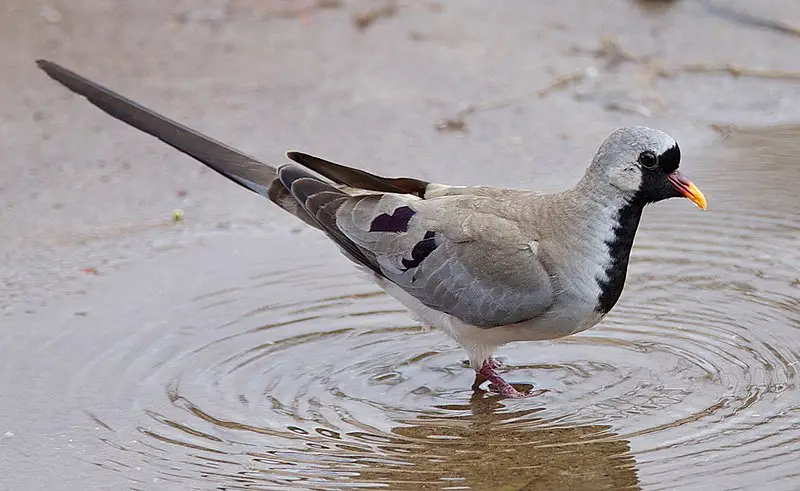
The Namaqua dove is a small pigeon that inhabits much of Sub-Saharan Africa, as well as Arabia and Madagascar.
It is the only species in its genus Oena, which has close affinities with the doves from Turtur.
Described for science by French zoologist Mathurin Jacques Brisson back in 1760, it typically measures between 26 to 28 cm long and boasts distinctive reddish plumage on its head, neck and breast region.
Its diet consists mainly of grains such as millet or wheat; however they may also feed on insects during dry spells when food sources are scarce.
The population size remains stable overall but localised declines have been observed due to human activities like habitat destruction and hunting for subsistence use or sport purposes.
Scientific classification:
| Kingdom | Animalia |
| Phylum | Chordata |
| Class | Aves |
| Order | Columbiformes |
| Family | Columbidae |
| Genus | Oena Swainson, 1837 |
| Species | O. capensis |
46. Egyptian Nightjar
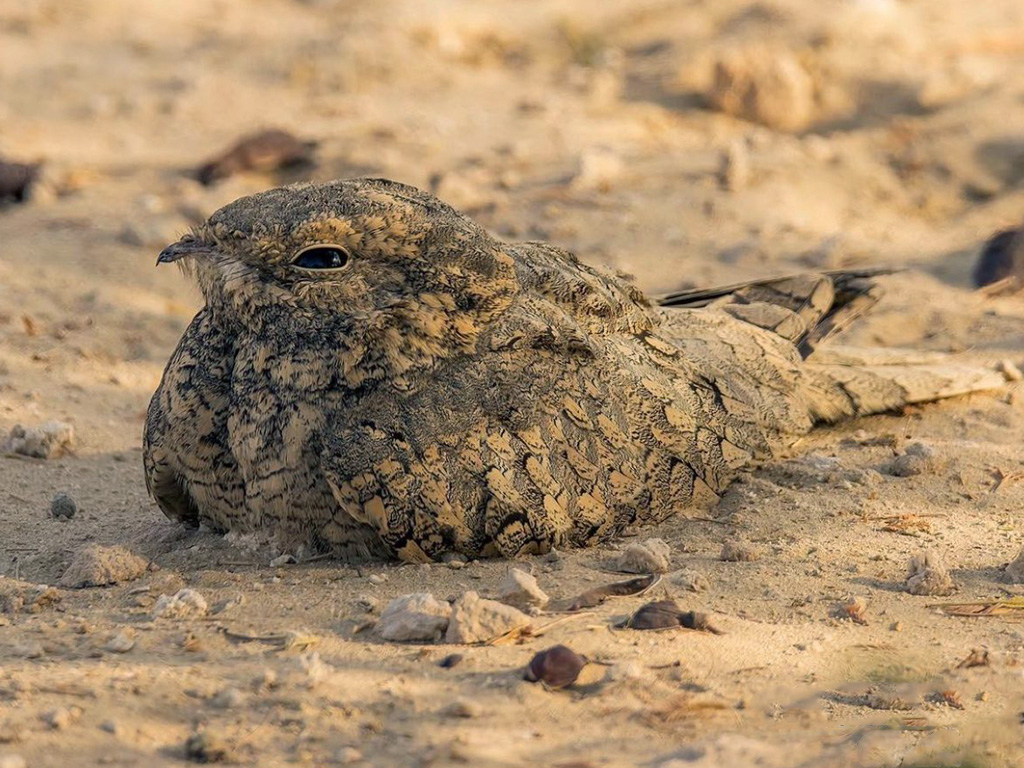
The Egyptian nightjar is a medium-sized nocturnal bird native to Southwest Asia and North Africa.
It migrates to tropical Africa during the winter months, where it can be seen in open woodlands as well as savannas and semi-desert environments.
This species has an extensive range with no major threats, so its conservation status is rated “least concern” by the IUCN.
The adult birds have distinctive white speckles on their wings and backs which help them blend into sandy or rocky habitats while they sleep during the day.
They feed mainly on insects such as moths, beetles, crickets and grasshoppers at night time when they are most active. With a little luck you may spot one of these mysterious creatures flying around after dusk.
Scientific classification:
| Kingdom | Animalia |
| Phylum | Chordata |
| Class | Aves |
| Order | Caprimulgiformes |
| Family | Caprimulgidae |
| Genus | Caprimulgus |
| Species | C. aegyptius |
47. Double-Spurred Spurfowl
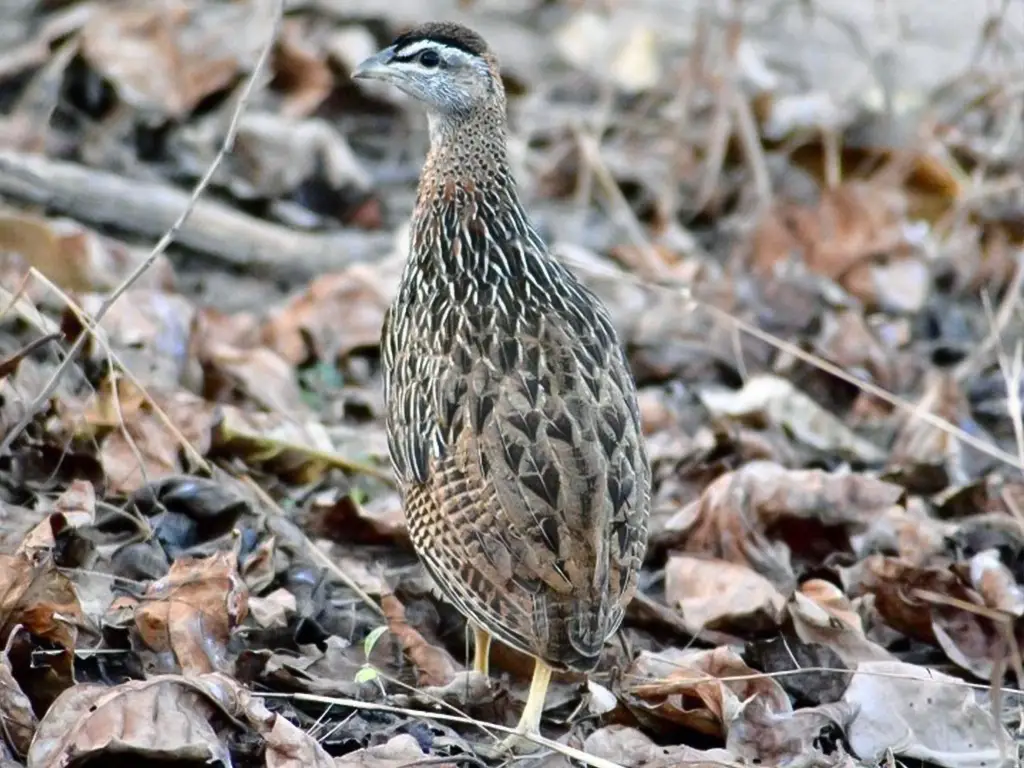
The Double-spurred Spurfowl is a gamebird of the Phasianidae family and belongs to the order Galliformes. It can be found in tropical West Africa, as well as an isolated population in Morocco which is decreasing due to human activity.
In 1760 Mathurin Jacques Brisson described it for the first time with its distinctive double spurs on each leg used during mating displays.
The bird has overall brown coloration but features black stripes along its sides and chest, while having white spots scattered across feathers too.
Its legs are long and thick enabling them to run quickly when escaping predators or searching for food such as insects, seeds or fruits that make up their diet.
These birds form monogamous pairs who defend territories fiercely against intruders all year round whether other spurfowls or humans encroaching into their habitats directly threatening conservation efforts being made by organisations around the world today.
Scientific classification:
| Kingdom | Animalia |
| Phylum | Chordata |
| Class | Aves |
| Order | Galliformes |
| Family | Phasianidae |
| Genus | Pternistis |
| Species | P. bicalcaratus |
48. Golden Nightjar
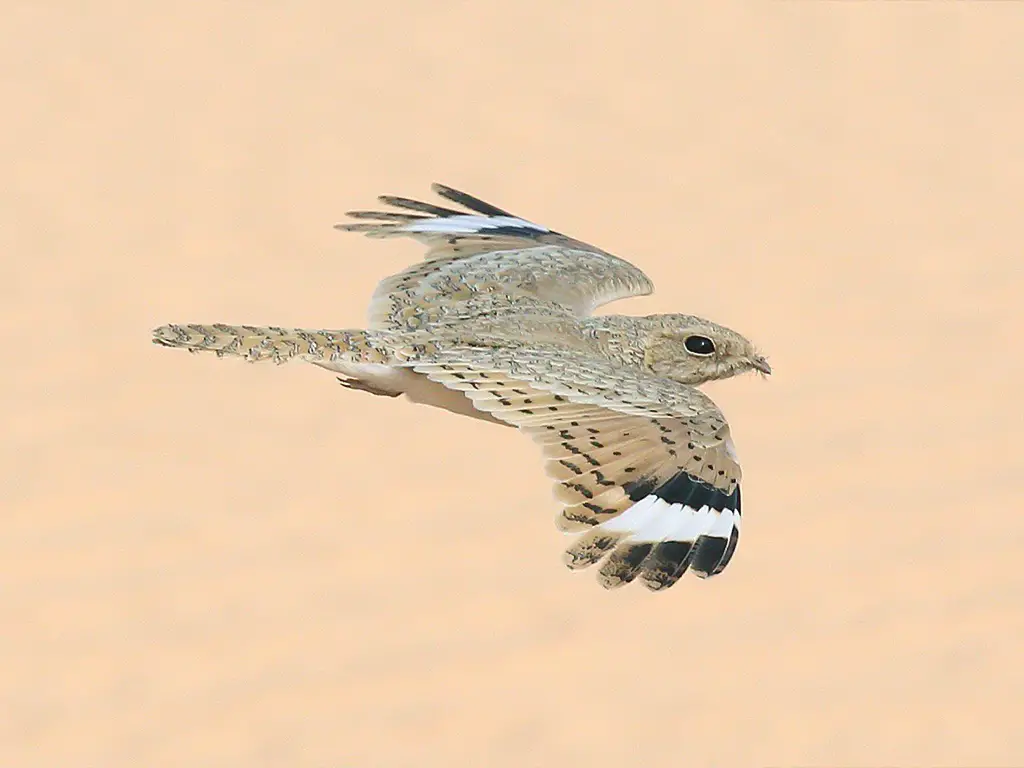
The Golden Nightjar is a small bird found in the Sahel region of northern Sub-Saharan Africa. It has a distinctively tawny buff and greyish-white coloration, with dark brown wings and head.
Measuring 23 – 25 cm in length, it appears large headed when at rest. This species can be identified by its distinctive call which sounds like two stones being clicked together rapidly or an old fashioned camera shutter opening and closing.
The Golden Nightjar feeds on insects caught while flying low over the ground or perched atop trees or bushes during the night time hours, making them difficult to spot even if they are heard calling out.
They also roost during daylight hours either singly or in pairs camouflaged among foliage along branches near open areas with short grasses that provide minimal cover from predators.
Scientific classification:
| Kingdom | Animalia |
| Phylum | Chordata |
| Class | Aves |
| Order | Caprimulgiformes |
| Family | Caprimulgidae |
| Genus | Caprimulgus |
| Species | C. eximius |
49. Marsh Owl
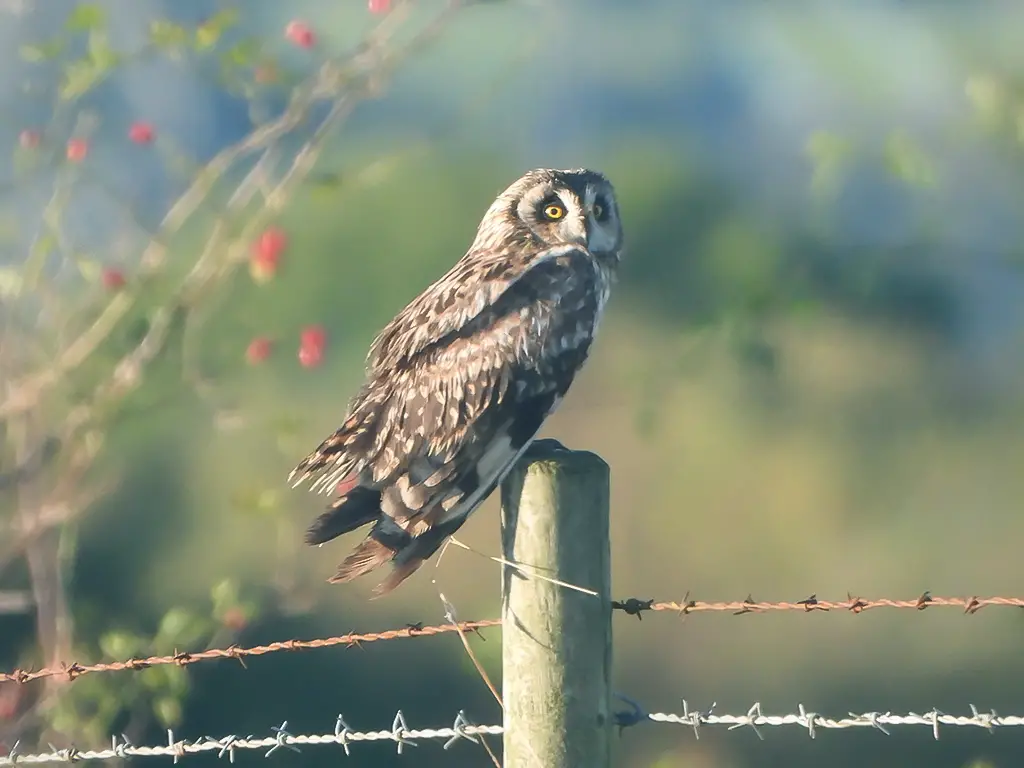
The Marsh owl is a medium to large species of owl. It has an unmistakable pumpkin-shaped head, with small ‘ear’ tufts and paler facial disc rimmed by dark brown color speckled buff.
Its eyes are also dark brown, while its ear tufts are earth-brown and often not visible unless close up. The bird’s overall plumage consists of a predominantly dark brown hue.
This uniquely shaped creature can be found in parts of Africa and Asia, typically inhabiting marshlands near rivers or lakes where it preys on rodents such as mice and rats among other animals like frogs insects reptiles etc .
They have been known to hunt during the day but prefere night time for hunting due their exceptional vision at low light conditions allowing them to detect prey easier than most owls do even more so when coupled with their excellent hearing capabilities which makes them one of the best nocturnal hunters around.
Scientific classification:
| Kingdom | Animalia |
| Phylum | Chordata |
| Class | Aves |
| Order | Strigiformes |
| Family | Strigidae |
| Genus | Asio |
| Species | A. capensis |
50. Olivaceous Warbler
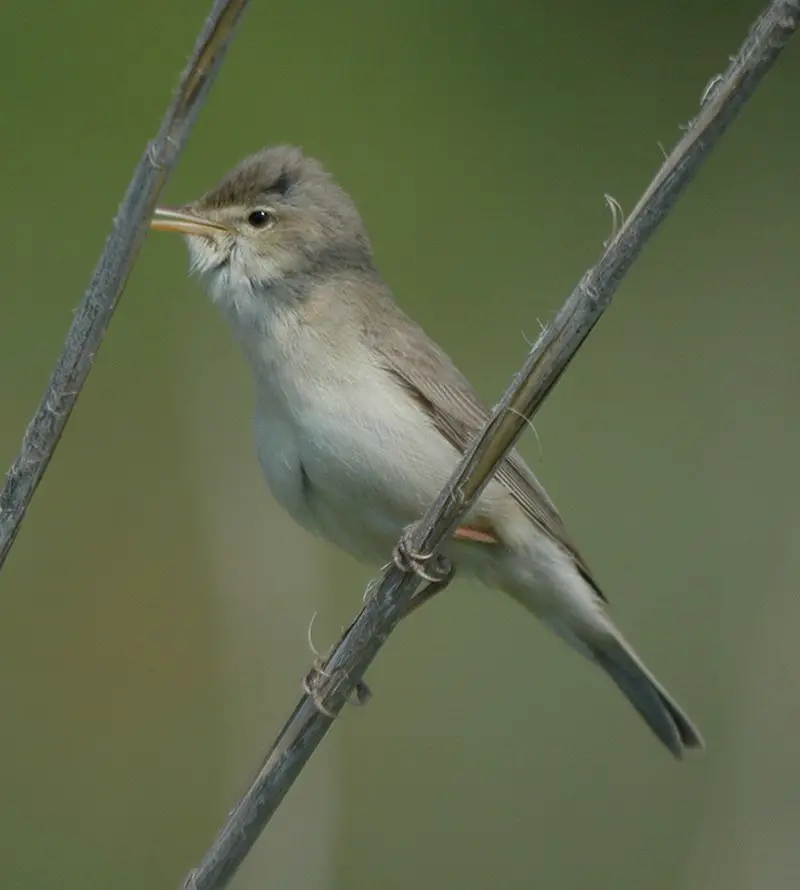
The Eastern Olivaceous Warbler is a small passerine bird, native to the Old World. It has dull plumage tones and breeds primarily in southeastern Europe, the Middle East and western Asia.
During winter it travels further south into northern Africa for warmer climates.
This warbler was previously grouped together with other Old World warblers as part of a larger family before being recognized as its own species.
The olivaceous warbler’s diet consists mainly of insects but also includes some fruit during migration months when food sources are more scarce.
These birds make use of their strong legs for hopping among foliage looking for prey or nesting materials such as feathers and twigs which they weave into cup shaped nests near ground level that can be found in shrubs or trees close to water bodies like rivers, lakes or marshes where there is plenty of insect life available throughout summertime breeding season.
Scientific classification:
| Kingdom | Animalia |
| Phylum | Chordata |
| Class | Aves |
| Order | Passeriformes |
| Family | Acrocephalidae |
| Genus | Iduna |
| Species | I. pallida |
Also Featured In: Common Birds of Lesbos Island,